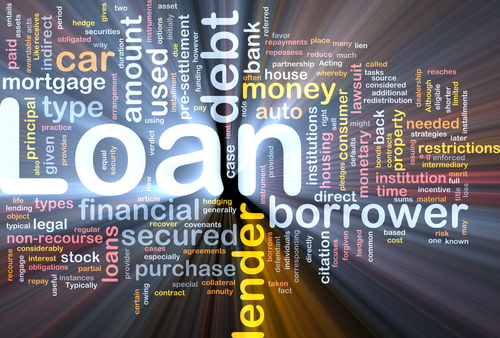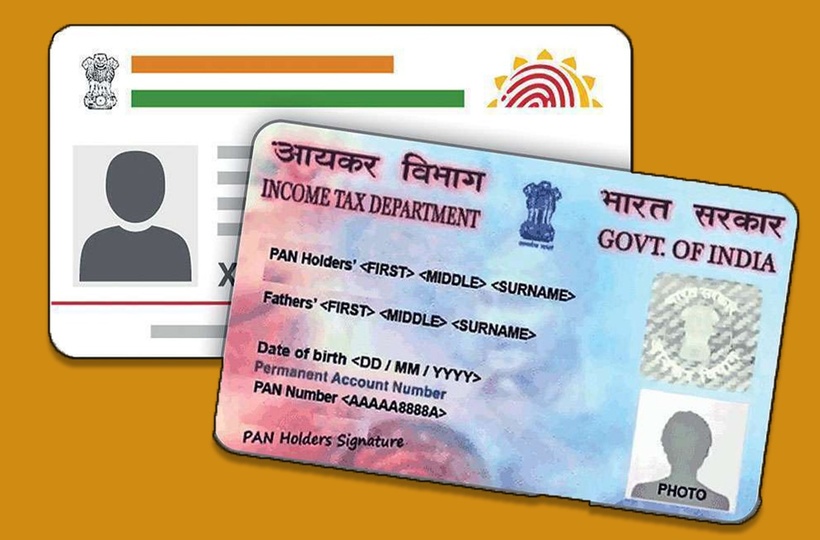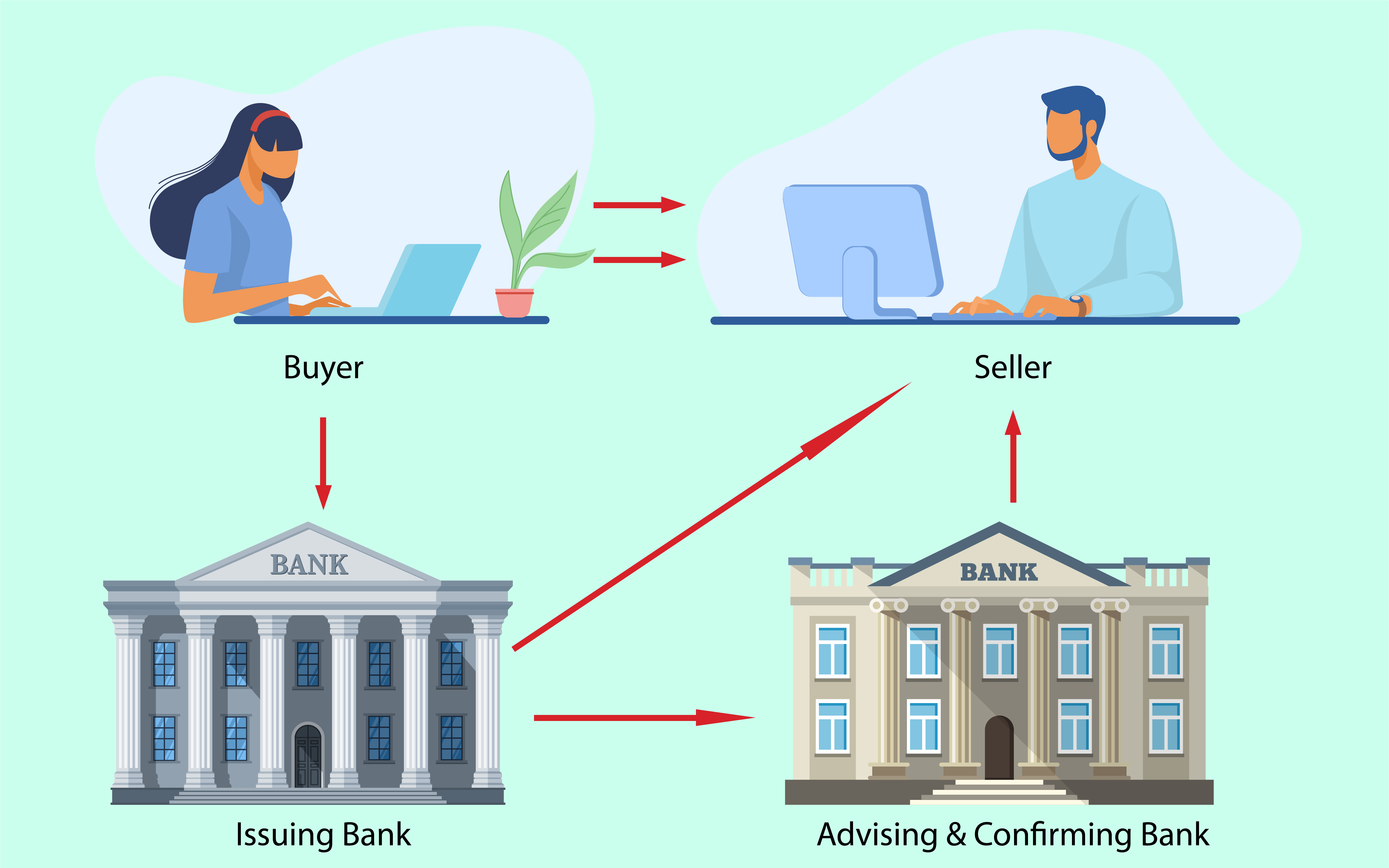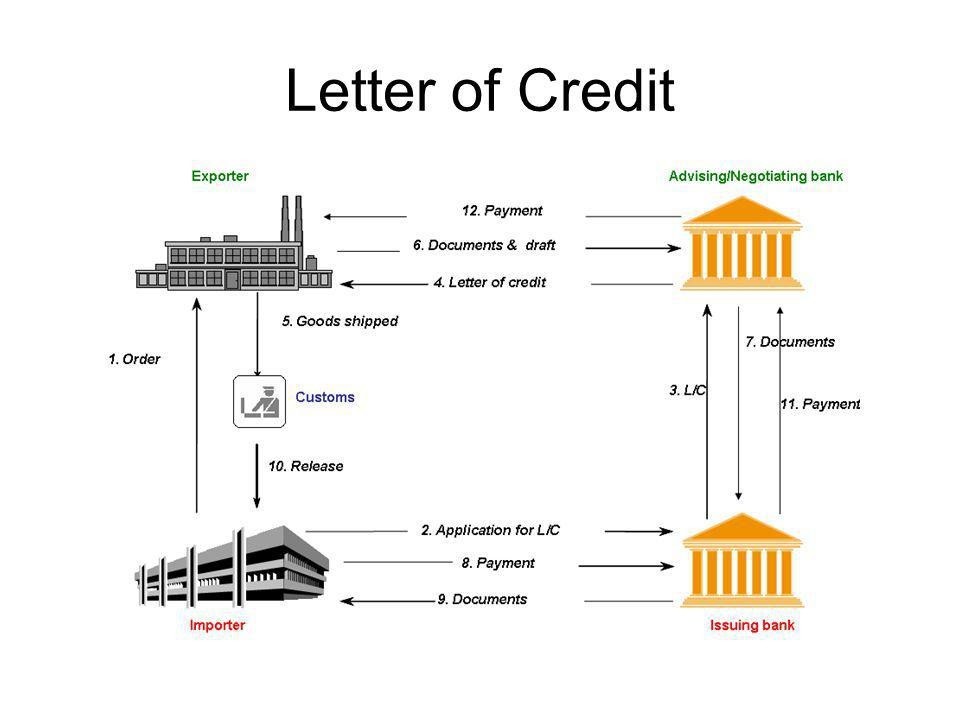Articles
something that makes you interested.

16 Tips to manage Manage Business Loans effectively
Managing business loans in India requires careful planning and execution to ensure that you can meet your financial obligations while also growing your business. Here are some best practices to consider:
- 1. Create a repayment plan: It is essential to create a repayment plan and stick to it. This plan should include the amount you need to pay each month, the due dates, and the duration of the loan. It's essential to understand the terms and conditions of your business loan thoroughly. This includes the interest rate, repayment schedule, penalties for late payments, and other fees associated with the loan. Businesses should keep track of loan repayments and ensure that they are made on time. Late payments can result in penalties, increased interest rates, and negatively impact the credit score.
- 2. Track your expenses: Keep track of all your expenses and income, and regularly review your financial statements to ensure that you are on track with your repayment plan. Keeping a close eye on your cash flow is crucial when managing a business loan. Make sure you have enough money coming in to cover your loan payments and other business expenses.
- 3. Maintain a good credit score: Your credit score is an essential factor in determining your eligibility for a loan and the interest rate you will be charged. So, make sure to maintain a good credit score by paying your bills on time, avoiding unnecessary debt, and keeping your credit utilization low.
- 4. Communicate with your lender: If you are facing any financial difficulties, it is crucial to communicate with your lender and inform them of your situation. They may be able to offer you a repayment plan that fits your financial situation. Businesses should compare various lenders to find the right one that offers the most favorable terms, interest rates, and repayment options.
- 5. Avoid taking on too much debt: While it may be tempting to take on more debt to expand your business, it is essential to avoid taking on too much debt. Make sure that you can afford the loan payments before taking on any new debt. Create a repayment plan that works for your business. This plan should include a timeline for repaying the loan and a strategy for managing your cash flow to ensure that you can meet your repayment obligations.
- 6. Use the loan for its intended purpose: Make sure to use the loan for its intended purpose and avoid using it for personal expenses or unrelated business expenses. The loan should be utilized effectively to grow the business, generate revenue, and repay the loan. Businesses should avoid using the loan amount for personal expenses or unrelated business expenses.
- 7. Develop a comprehensive business plan: Before taking out a loan, it's important to have a clear understanding of how you plan to use the funds and how you will repay the loan. This includes creating a detailed business plan that outlines your goals, strategies, and financial projections.
- 8. Choose the right type of loan: There are various types of loans available in India, such as term loans, cash-credit, working capital loans, equipment financing, bill discounting, commercial vehicle financing, GST based lending and more. You should select the loan that best fits your business needs and repayment capacity.
- 9. Shop around for the best interest rates and terms: Different lenders may offer different interest rates, repayment terms, and other loan conditions. It's essential to compare multiple lenders and their offers to find the one that works best for your business.
- 10. Maintain good credit: A good credit score is crucial when applying for a loan in India. You can improve your credit score by paying bills on time, keeping your credit utilization low, and avoiding too many credit inquiries. A good credit score can increase the chances of getting approved for a loan and may also result in lower interest rates. Businesses can maintain a good credit score by paying their bills on time, managing credit utilization, and limiting the number of credit inquiries.
- 11. Monitor your finances: Once you have obtained the loan, it's important to keep track of your finances carefully. This includes monitoring your cash flow, tracking expenses, and regularly reviewing your loan repayment schedule.
- 12. Make timely loan repayments: Making timely loan repayments is crucial to maintaining a good credit score and avoiding penalties. You can set up automatic payments or reminders to ensure that you never miss a payment.
- 13. Seek professional advice: If you're unsure about any aspect of managing your business loan, consider seeking professional advice from a financial advisor or accountant. They can provide you with valuable insights and help you make informed decisions.
- 1. Plan for Loan Repayment: Before taking out a business loan, it's essential to plan for loan repayment. This includes understanding the monthly repayment amount, loan tenure, and interest rate. The loan amount should be decided based on the ability to repay the loan.
- 14. Read the Fine Print: It's essential to read the loan agreement carefully and understand all the terms and conditions, including the interest rate, repayment schedule, fees, and penalties.
-
15. Maintain Adequate Cash Flow: Adequate cash flow is essential to repay the loan on time. Businesses should ensure that they have a steady income stream to meet their repayment obligations
By following these best practices, you can effectively manage your business loans and achieve your financial goals.
?Web: https://mudracircle.com/borrower/register
?eMail: [email protected]
☎️Contact: +917506127293
WhatsApp: https://wa.me/message/ZCYP6D5XQASSC1, Telegram: https://t.me/joinchat/UQAXMqXoMQgbX7JQ
Linkedin: https://www.linkedin.com/feed/update/urn:li:activity:6963403272405602305
Instagram: https://www.instagram.com/mudracircle.in/
Twitter: https://twitter.com/@mudracircle_in
Quora: https://mudracircledigitallendingplatform.quora.com
>

Business Loan Myths
There are several myths and misconceptions about business loans in India. It's important to dispel these myths to make informed decisions when seeking financing for your business. Here are some common myths:
-
Only Established Businesses Can Get Loans: Many believe that only well-established businesses with a long track record can secure business loans. While established businesses may have an advantage, there are various loan options available for startups and small businesses as well. Lenders offer different products tailored to different business stages.
-
Banks Are the Only Lenders: While banks are a traditional source of business financing, there are numerous other lending institutions, including non-banking financial companies (NBFCs), microfinance institutions, and online lenders. These alternative lenders often have more flexible criteria and faster approval processes.
-
Collateral Is Always Required: Some believe that you must provide collateral to secure a business loan. While many loans do require collateral, there are unsecured business loans available that don't require you to pledge assets. However, unsecured loans often come with higher interest rates.
-
Loan Approval Is Guaranteed: It's a common misconception that if you apply for a business loan, you are guaranteed approval. Lenders evaluate your creditworthiness, business plan, and financial health before approving a loan. Approval is not guaranteed, and your application may be denied if you don't meet the lender's criteria.
-
Interest Rates Are Standardized: Interest rates for business loans can vary significantly based on factors such as your credit score, the type of loan, the lender, and prevailing market conditions. There is no one-size-fits-all interest rate, so it's essential to shop around for the best rates and terms.
-
Applying for Multiple Loans Is a Good Strategy: Some entrepreneurs believe that applying for multiple loans from different lenders increases their chances of approval. However, each loan application can impact your credit score, and too many inquiries within a short period may raise red flags for lenders. It's best to research and choose the most suitable lender before applying.
-
You Can Only Use Business Loans for Specific Purposes: While some business loans are designed for specific purposes like equipment purchase or working capital, others are more flexible and can be used for various business needs. Be sure to clarify the terms and restrictions of the loan with your lender.
-
Business Loans Are Only for Big Amounts: Business loans come in various sizes, from small microloans to large-scale financing options. You can find loans that match your specific funding needs, whether it's a small infusion of capital or a substantial amount for expansion.
-
Repayment Terms Are Inflexible: Many assume that business loan repayment terms are rigid and unchangeable. In reality, you can negotiate repayment terms with some lenders. It's crucial to discuss your needs and explore options for flexible repayment schedules.
-
Lenders Only Care About Credit Score: While a good credit score is essential for loan approval, lenders also consider your business plan, cash flow, profitability, and industry outlook. Even if you have a less-than-perfect credit score, you may still qualify for a business loan if your business demonstrates strong fundamentals.
-
Getting a business loan means giving up control of your business. Reality: Obtaining a business loan typically does not involve giving up ownership or control of your business. Lenders are interested in repayment and do not typically interfere with day-to-day operations or decision-making.
-
It's better to rely on personal savings than take out a business loan. Reality: While using personal savings can be a source of funding, it's essential to consider the opportunity cost and the potential for limited business growth. A well-structured business loan can provide the necessary capital without depleting personal savings.
-
Once you get a business loan, your financial troubles are over. Reality: A business loan is a financial tool, not a solution to all problems. Borrowers must have a clear repayment plan and ensure that the funds are used wisely to generate revenue and cover the loan obligations.
-
Business loans are only for specific purposes. Reality: Business loans can be used for a wide range of purposes, including working capital, expansion, purchasing equipment, inventory, and even refinancing existing debts. The flexibility of usage depends on the type of loan and the lender's policies.
-
The interest rates on business loans are fixed and unchangeable. Reality: Interest rates on business loans in India can be fixed or variable. Fixed-rate loans have a constant interest rate throughout the loan tenure, while variable-rate loans may change based on market conditions or a benchmark rate like the RBI repo rate.
-
Applying for a business loan will negatively affect your credit score. Reality: While applying for a business loan may lead to a temporary inquiry on your credit report, it doesn't necessarily harm your credit score. Timely repayment of the loan can actually improve your creditworthiness over time.
Before seeking a business loan in India, it's crucial to do thorough research, assess your business's financial health, and understand the terms and conditions of the loan you're considering.
?Web: https://mudracircle.com/borrower/register
?eMail: [email protected]
☎️Contact: +917506127293
WhatsApp: https://wa.me/message/ZCYP6D5XQASSC1, Telegram: https://t.me/joinchat/UQAXMqXoMQgbX7JQ
Linkedin: https://www.linkedin.com/feed/update/urn:li:activity:6963403272405602305
Instagram: https://www.instagram.com/mudracircle.in/
Twitter: https://twitter.com/@mudracircle_in
Quora: https://mudracircledigitallendingplatform.quora.com
>

Business Loan Application Rejection Reasons
Business loan applications in India can get rejected for various reasons. Lenders have specific eligibility criteria and risk assessment processes in place to evaluate loan applications. Here are some common reasons why business loan applications may be rejected in India:
-
Poor Credit Score: One of the primary reasons for loan rejection is a low credit score. Lenders assess the creditworthiness of borrowers, and a poor credit history, late payments, or defaults on previous loans can significantly impact your chances of approval.
-
Insufficient Income: Lenders want to ensure that your business generates enough income to repay the loan. If your business's income does not meet the lender's minimum requirement, your application may be denied.
-
Lack of Collateral: For secured business loans, such as term loans or loans against property, you must provide collateral. If you do not have sufficient assets to pledge as collateral or the value of the collateral is insufficient, your application may be rejected.
-
Incomplete Documentation: Incomplete or inaccurate documentation can lead to the rejection of your loan application. Lenders require specific financial documents, including income statements, balance sheets, tax returns, and business plans. Any discrepancies or missing documents can result in a rejection.
-
High Debt-to-Income Ratio: If your business already has a significant amount of outstanding debt relative to its income, lenders may view it as a high-risk borrower. A high debt-to-income ratio can lead to rejection, as it raises concerns about your ability to repay the new loan.
-
Unstable Business History: Lenders prefer businesses with a stable track record. Start-ups or businesses with a history of losses may face rejection as lenders may perceive them as riskier ventures.
-
Poor Business Plan: A well-structured business plan is essential to convince lenders that your business is viable and can generate the revenue needed to repay the loan. A weak or unrealistic business plan can lead to rejection.
-
Legal and Compliance Issues: Any legal or compliance issues related to your business, such as pending lawsuits or regulatory violations, can make lenders hesitant to approve your loan application.
-
Industry Risk: Some industries are considered riskier than others, and lenders may be cautious when lending to businesses in these high-risk sectors. This can result in rejections for businesses operating in certain industries.
-
Unstable Market Conditions: Economic and market conditions can influence lenders' decisions. During economic downturns or times of financial instability, lenders may become more conservative and reject applications due to increased risk.
-
Poor Loan Request: Applying for a loan that doesn't align with your business needs or requesting an excessively large loan amount relative to your business's financial capacity can lead to rejection. It's crucial to have a clear understanding of your funding requirements.
-
Negative Banking History: If your business has a history of overdrafts, bounced checks, or other banking issues, it can affect your credibility with lenders and result in rejection.
To improve your chances of approval, it's essential to maintain a good credit history, prepare a comprehensive business plan, ensure your financial documents are accurate and up-to-date, and choose loan products that match your business needs and financial capacity. If your application is rejected, you can also work on addressing the specific reasons for rejection before reapplying for a business loan.
?Web: https://mudracircle.com/borrower/register
?eMail: [email protected]
☎️Contact: +917506127293
WhatsApp: https://wa.me/message/ZCYP6D5XQASSC1, Telegram: https://t.me/joinchat/UQAXMqXoMQgbX7JQ
Linkedin: https://www.linkedin.com/feed/update/urn:li:activity:6963403272405602305
Instagram: https://www.instagram.com/mudracircle.in/
Twitter: https://twitter.com/@mudracircle_in
Quora: https://mudracircledigitallendingplatform.quora.com
>

How is Credit Score calculated in india
In India, credit scores are calculated by credit bureaus using a specific algorithm that assesses an individual's creditworthiness based on their credit history and financial behavior. While there are several credit bureaus in India, such as CIBIL, Experian, Equifax, and CRIF High Mark, the calculation of credit scores generally follows a similar framework. Here's how credit scores are typically calculated in India:
Credit Report Data Collection: Credit bureaus collect and maintain credit-related information from various financial institutions, including banks, credit card companies, and NBFCs (Non-Banking Financial Companies). This data includes details about an individual's credit accounts, such as loans, credit cards, and their repayment history.
Payment History (Weightage: Approximately 30-35%): Payment history is a crucial component of credit score calculation, accounting for the largest percentage. It evaluates how consistently an individual makes payments on their credit accounts. Timely payments have a positive impact on the credit score, while late payments, defaults, and missed payments can lower it.
Credit Utilization (Weightage: Approximately 25-30%): Credit utilization measures the ratio of credit used to the total credit limit available. High credit card balances relative to the credit limit can negatively impact the credit score. Keeping credit utilization low is advisable.
Length of Credit History (Weightage: Approximately 10-15%): The length of a person's credit history is considered. A longer credit history generally has a positive influence on the credit score, as it provides more data for assessing creditworthiness.
Types of Credit (Weightage: Approximately 10-15%): Credit bureaus evaluate the types of credit accounts an individual has, such as credit cards, personal loans, home loans, and more. A mix of credit types can have a positive impact on the credit score.
Recent Credit Inquiries (Weightage: Approximately 10-15%): Each time an individual applies for new credit, a credit inquiry is recorded. Multiple inquiries within a short period can negatively affect the credit score, as it may indicate financial stress or excessive borrowing.
Credit Account Age (Weightage: Minimal): The age of individual credit accounts is also taken into account, with older accounts often viewed more favorably.
Different credit bureaus may assign slightly different weightages to these factors, and they may use proprietary algorithms to calculate credit scores. As a result, the exact credit score may vary between bureaus. However, the key components mentioned above generally play a significant role in credit score calculation.
Maintaining a healthy credit score in India requires responsible financial behavior, such as making on-time payments, managing credit card balances, and avoiding excessive borrowing. Regularly monitoring your credit report for accuracy and addressing any discrepancies can also help you maintain a good credit score.
?Web: https://mudracircle.com/borrower/register
?eMail: [email protected]
☎️Contact: +917506127293
WhatsApp: https://wa.me/message/ZCYP6D5XQASSC1, Telegram: https://t.me/joinchat/UQAXMqXoMQgbX7JQ
Linkedin: https://www.linkedin.com/feed/update/urn:li:activity:6963403272405602305
Instagram: https://www.instagram.com/mudracircle.in/
Twitter: https://twitter.com/@mudracircle_in
Quora: https://mudracircledigitallendingplatform.quora.com
>
>
>

Essential Checklist before taking a Business Loan
Taking a business loan in India is a significant financial decision, and it's essential to be well-prepared before applying for one. Here's a checklist of important considerations and steps to take before taking a business loan in India:
-
Determine Your Business Needs:
- Clearly define the purpose of the loan, whether it's for working capital, expansion, equipment purchase, or other specific business needs.
- Calculate the exact amount of funding required to meet your objectives.
-
Assess Your Business's Financial Health:
- Review your business's financial statements, including income statements, balance sheets, and cash flow statements, to ensure they are in order.
- Evaluate your business's creditworthiness by checking your credit score and credit report.
-
Research Lenders:
- Research and compare different lenders, including banks, NBFCs, and online lenders, to find the one that offers the best terms, interest rates, and repayment options.
- Consider the reputation and customer service of the lender.
-
Understand Loan Types:
- Familiarize yourself with the various types of business loans available in India, such as term loans, working capital loans, equipment loans, and more.
- Choose the loan type that aligns with your business needs.
-
Loan Eligibility Check:
- Determine if your business meets the eligibility criteria set by the lender, including factors like business vintage, turnover, and creditworthiness.
- Ensure that you and your business meet the lender's minimum requirements.
-
Gather Necessary Documentation:
- Prepare all the required financial documents, including income tax returns, bank statements, business plans, and audited financials.
- Ensure that your documentation is accurate and up-to-date.
-
Business Plan:
- Create a detailed business plan that outlines how you will use the loan funds and how you plan to repay the loan.
- Include a financial projection that demonstrates your business's ability to generate income and repay the loan.
-
Collateral Assessment:
- Determine if the loan requires collateral. If so, identify the assets you can pledge as collateral, such as property, machinery, or inventory.
- Assess the value of the collateral relative to the loan amount you're seeking.
-
Review Loan Terms:
- Carefully review the terms and conditions of the loan, including interest rates, repayment schedule, and any associated fees.
- Understand the implications of fixed versus variable interest rates.
-
Loan Repayment Plan:
- Develop a realistic loan repayment plan that fits your business's cash flow.
- Ensure that you can comfortably make monthly loan payments without straining your finances.
-
Legal and Regulatory Compliance:
- Ensure that your business complies with all legal and regulatory requirements, including licenses, permits, and tax obligations.
- Address any legal or compliance issues before applying for the loan.
-
Alternative Funding Options:
- Explore other financing options, such as government schemes, venture capital, angel investors, or crowdfunding, to determine if they may be more suitable for your business needs.
-
Seek Professional Advice:
- Consider consulting with financial advisors, accountants, or business consultants who can provide expert guidance on your loan application and financial strategy.
-
Loan Application Submission:
- Complete the loan application accurately and submit it to the chosen lender along with all required documents.
- Keep copies of all application materials for your records.
-
Follow Up and Communication:
- Maintain open communication with the lender throughout the loan approval process, and be prepared to provide additional information if requested.
-
Loan Agreement Review:
- Thoroughly review the loan agreement and seek legal advice if necessary before signing.
- Ensure that you understand all the terms and conditions.
-
Loan Utilization:
- Use the loan funds exclusively for the stated purpose mentioned in your business plan.
- Keep detailed records of how the funds are used.
-
Monitor Loan Performance:
- Regularly monitor your business's financial performance to ensure that you can meet the loan repayment obligations.
- Adjust your business plan and financial strategies if necessary.
By following this checklist and being well-prepared, you can increase your chances of successfully securing a business loan in India that suits your business needs and financial capabilities.
?Web: https://mudracircle.com/borrower/register
?eMail: [email protected]
☎️Contact: +917506127293
WhatsApp: https://wa.me/message/ZCYP6D5XQASSC1, Telegram: https://t.me/joinchat/UQAXMqXoMQgbX7JQ
Linkedin: https://www.linkedin.com/feed/update/urn:li:activity:6963403272405602305
Instagram: https://www.instagram.com/mudracircle.in/
Twitter: https://twitter.com/@mudracircle_in
Quora: https://mudracircledigitallendingplatform.quora.com
>

Why e-Businesses are the future in india
E-businesses or digital businesses are considered the future in India for several compelling reasons:
-
Large and Growing Internet User Base: India has one of the largest and fastest-growing internet user bases in the world. With over a billion people gaining access to the internet, there is a vast potential customer base for digital businesses.
-
Increasing Smartphone Penetration: The widespread availability of affordable smartphones has further accelerated internet adoption. This has made it easier for people to access digital services and shop online, creating opportunities for e-businesses.
-
Digital Payments Revolution: India has witnessed a significant shift towards digital payments and online transactions, fueled by initiatives like demonetization and the growth of digital payment platforms like UPI (Unified Payments Interface). This trend has made it more convenient for consumers to make online purchases and for businesses to accept payments.
-
E-commerce Growth: The e-commerce sector in India has seen remarkable growth, with major players like Flipkart, Amazon, and others dominating the market. However, there is still ample room for niche e-commerce businesses to thrive and cater to specialized markets.
-
Government Initiatives: The Indian government has launched various initiatives to promote digitalization and entrepreneurship, such as "Digital India" and "Startup India." These initiatives provide support, incentives, and resources to foster the growth of digital businesses.
-
Start-up Ecosystem: India has a vibrant start-up ecosystem, with a focus on technology and innovation. Many entrepreneurs are launching digital businesses that offer unique solutions to various challenges, ranging from e-commerce to fintech and healthcare.
-
Global Market Access: Digital businesses in India have the potential to tap into global markets with ease. With the right products or services and effective digital marketing, Indian e-businesses can reach customers worldwide.
-
Cost-Effective Operations: Running a digital business often requires lower overhead costs compared to traditional brick-and-mortar operations. This cost efficiency can be a significant advantage, especially for start-ups and small businesses.
-
Data Analytics and Personalization: E-businesses can leverage data analytics to gain insights into customer behavior and preferences. This enables personalized marketing, product recommendations, and a better overall customer experience.
-
Scalability: Digital businesses can scale quickly and efficiently, adapting to changing market conditions and customer demands. This scalability allows them to grow rapidly and seize emerging opportunities.
-
Convenience and Accessibility: Consumers increasingly value convenience, and digital businesses provide easy access to products and services from the comfort of one's home or mobile device. This convenience is a key driver of the digital economy.
-
Environmental Sustainability: Digital businesses can contribute to environmental sustainability by reducing the need for physical infrastructure, transportation, and paper-based processes, thus lowering their carbon footprint.
While the future of e-businesses in India is promising, it's essential for entrepreneurs and businesses to stay agile, adapt to evolving technologies and consumer preferences, and address challenges related to cybersecurity, privacy, and regulatory compliance. Additionally, building a strong online presence, providing excellent customer service, and fostering innovation will be critical for success in the digital business landscape.
?Web: https://mudracircle.com/borrower/register
?eMail: [email protected]
☎️Contact: +917506127293
WhatsApp: https://wa.me/message/ZCYP6D5XQASSC1,
Telegram: https://t.me/joinchat/UQAXMqXoMQgbX7JQ
Linkedin: https://www.linkedin.com/feed/update/urn:li:activity:6963403272405602305
Instagram: https://www.instagram.com/mudracircle.in/
Twitter: https://twitter.com/@mudracircle_in
Quora: https://mudracircledigitallendingplatform.quora.com
>
>
>

Factors To Be Considered While Comparing Business Loan Lenders
When comparing business loan lenders in India, it's essential to carefully evaluate various factors to choose the right lender that suits your business's needs and financial situation. Here are the top factors to consider when comparing business loan lenders:
-
Interest Rates:
- Compare the interest rates offered by different lenders. Even a small difference in interest rates can significantly impact the cost of the loan over its tenure.
-
Loan Amount and Eligibility:
- Check the minimum and maximum loan amounts offered by each lender.
- Understand the eligibility criteria, including the required business vintage, turnover, and credit score, to ensure your business qualifies for the loan.
-
Loan Types:
- Determine the types of business loans offered by each lender, such as term loans, working capital loans, equipment loans, or lines of credit.
- Choose a lender that provides the specific type of loan that aligns with your business needs.
-
Loan Tenure:
- Consider the loan tenure options available. A longer tenure may reduce the monthly repayment burden but can result in higher overall interest costs.
-
Repayment Terms:
- Review the repayment terms and options, including the frequency of payments (monthly, quarterly) and whether the loan offers flexibility in prepayment without penalties.
-
Processing Fees and Charges:
- Understand the various fees associated with the loan, such as processing fees, prepayment penalties, late payment charges, and any hidden costs.
- Calculate the total cost of the loan, including fees, to make an accurate comparison.
-
Collateral Requirements:
- Determine whether the loan requires collateral. If so, assess the type and value of collateral needed, and ensure your business can provide it.
-
Credit Score Requirements:
- Check the minimum credit score required by each lender. A lower credit score may limit your options or result in higher interest rates.
-
Approval Time:
- Evaluate the speed at which lenders process and approve loan applications. Faster approval times can be crucial when you need funds quickly.
-
Customer Support and Reputation:
- Research the lender's reputation and customer reviews to gauge their reliability and customer service quality.
- Consider reaching out to the lender's customer support to assess their responsiveness and willingness to assist.
-
Flexibility and Customization:
- Determine whether the lender offers flexibility in loan terms and customization to suit your business's unique needs.
- Some lenders may provide industry-specific loan products or tailored solutions.
-
Additional Services:
- Check if the lender offers additional services like financial advice, credit counseling, or other resources that can benefit your business.
-
Regulatory Compliance:
- Ensure that the lender complies with all relevant regulatory requirements and possesses the necessary licenses and approvals.
-
Accessibility and Technology:
- Evaluate the lender's accessibility and ease of use for online applications, document submissions, and digital account management.
-
Repayment Track Record:
- Inquire about the lender's history of handling loan repayments, including how they handle late payments and defaults.
-
Terms and Conditions:
- Carefully read and understand the lender's terms and conditions, including any clauses related to loan covenants, default triggers, and early repayment penalties.
-
Refinancing Options:
- Explore whether the lender offers refinancing options that can help you reduce the cost of your loan in the future.
By thoroughly considering these factors and conducting a comprehensive comparison of business loan lenders in India, you can make an informed decision that aligns with your business's financial goals and requirements.
?Web: https://mudracircle.com/borrower/register
?eMail: [email protected]
☎️Contact: +917506127293
WhatsApp: https://wa.me/message/ZCYP6D5XQASSC1,
Telegram: https://t.me/joinchat/UQAXMqXoMQgbX7JQ
Linkedin: https://www.linkedin.com/feed/update/urn:li:activity:6963403272405602305
Instagram: https://www.instagram.com/mudracircle.in/
Twitter: https://twitter.com/@mudracircle_in
Quora: https://mudracircledigitallendingplatform.quora.com
>

Benefits Of Getting An Unsecured Business Loan
Obtaining an unsecured business loan for your small business in India can offer several benefits, making it an attractive funding option. Here are the key advantages of getting an unsecured business loan:
-
No Collateral Requirement:
- Unsecured business loans do not require you to pledge any collateral or assets as security. This eliminates the risk of losing valuable assets if your business faces financial difficulties.
-
Simplified Application Process:
- The application process for unsecured business loans is typically more straightforward and faster compared to secured loans, which often involve extensive collateral evaluation.
-
Quick Approval and Disbursement:
- Unsecured business loans often have shorter approval timelines, making them suitable for addressing urgent business needs.
- Funds are disbursed relatively quickly, allowing you to seize time-sensitive opportunities or manage cash flow gaps.
-
Lower Risk for Borrowers:
- As there is no collateral at stake, unsecured loans reduce the personal financial risk for business owners.
- You won't risk losing personal assets like your home or personal savings if you face difficulty repaying the loan.
-
Accessible to Start-ups and Young Businesses:
- Start-up businesses or those with a limited credit history may find it easier to secure unsecured loans, as they may not have substantial assets to pledge as collateral.
-
Flexible Use of Funds:
- Unsecured business loans offer flexibility in how you can use the funds. You can allocate them to various business needs, such as working capital, expansion, equipment purchase, marketing, or debt consolidation.
-
Builds Credit History:
- Successfully repaying an unsecured business loan can help establish or improve your business's credit history and credit score, which can be beneficial for future financing needs.
-
No Asset Valuation Costs:
- Unlike secured loans, where you may need to pay for asset valuation and appraisal services, unsecured loans do not involve such expenses.
-
Competitive Interest Rates:
- Some lenders offer competitive interest rates on unsecured business loans, especially if your business has a strong credit profile and financial track record.
-
No Equity Dilution:
- Unsecured loans do not require you to give up ownership or equity in your business, allowing you to retain full control.
-
Tax Benefits:
- The interest paid on unsecured business loans is often tax-deductible, reducing your business's taxable income.
-
Credit Score Improvement:
- Responsible repayment of an unsecured loan can positively impact your business's credit score, making it easier to access credit in the future and potentially at better terms.
While unsecured business loans offer numerous benefits, it's essential to recognize that they may have higher interest rates compared to secured loans due to the increased risk for lenders. To maximize the advantages of unsecured business loans, it's crucial to assess your business's ability to meet repayment obligations, maintain a strong credit profile, and carefully evaluate loan terms and conditions from various lenders in India to find the most favorable option for your small business.
?Web: https://mudracircle.com/borrower/register
?eMail: [email protected]
☎️Contact: +917506127293
WhatsApp: https://wa.me/message/ZCYP6D5XQASSC1,
Telegram: https://t.me/joinchat/UQAXMqXoMQgbX7JQ
Linkedin: https://www.linkedin.com/feed/update/urn:li:activity:6963403272405602305
Instagram: https://www.instagram.com/mudracircle.in/
Twitter: https://twitter.com/@mudracircle_in
Quora: https://mudracircledigitallendingplatform.quora.com
>
>
>

Pros & Cons Of Using A Credit Card To Fund Your Business
Using a credit card to fund your small business in India can be a convenient and flexible financing option, but it also comes with both advantages and disadvantages. Here are the pros and cons of using a credit card for your small business:
Pros:
-
Quick Access to Funds: Credit cards provide immediate access to funds, allowing you to address urgent business needs or take advantage of time-sensitive opportunities.
-
Flexibility: Credit cards offer flexibility in how you use the funds. You can use the card for various business expenses, such as purchasing inventory, covering operational costs, or paying for marketing campaigns.
-
No Collateral: Credit card financing is unsecured, meaning you don't need to pledge any assets or collateral to access funds. This reduces the risk of losing valuable assets if you can't repay the debt.
-
Builds Credit History: Responsible use of a business credit card can help establish or improve your business's credit history and credit score, potentially making it easier to access larger loans or lines of credit in the future.
-
Rewards and Perks: Many business credit cards offer rewards programs, cashback, or other perks, allowing you to earn benefits such as travel miles or discounts on business-related expenses.
-
Separates Personal and Business Expenses: Using a dedicated business credit card can help you separate your personal and business finances, making accounting and tax reporting more straightforward.
Cons:
-
High-Interest Rates: Credit cards often have higher interest rates compared to traditional business loans or lines of credit. Carrying a balance can lead to substantial interest charges, increasing the cost of borrowing.
-
Credit Utilization Impact: High credit card balances relative to your credit limit can negatively impact your credit utilization ratio, which, in turn, can lower your credit score.
-
Minimum Monthly Payments: Credit card issuers require you to make a minimum monthly payment, which can be a fixed percentage of the outstanding balance. Paying only the minimum can result in long-term debt and higher interest costs.
-
Credit Score Risk: Late payments or defaulting on credit card payments can harm your personal and business credit scores, making it harder to access financing in the future.
-
Limited Credit Limit: Credit card limits may not provide sufficient funding for significant business expenses or expansion plans. Relying solely on credit cards may restrict your growth potential.
-
Hidden Fees: Credit cards can come with various fees, including annual fees, late payment fees, and foreign transaction fees. These additional costs can add up over time.
-
Variable Interest Rates: Credit card interest rates are typically variable and can increase over time due to market conditions or changes in your credit profile.
-
Debt Trap Risk: If not managed carefully, using credit cards for business financing can lead to a debt trap, where the business accumulates high-interest debt that becomes challenging to repay.
When considering using a credit card to fund your small business in India, it's crucial to weigh the pros and cons carefully. If you choose this financing option, it's essential to use the card responsibly, pay off the balance in full whenever possible, and have a clear plan for managing your credit card debt to avoid the potential downsides associated with high-interest debt and credit score damage.
?Web: https://mudracircle.com/borrower/register
?eMail: [email protected]
☎️Contact: +917506127293
WhatsApp: https://wa.me/message/ZCYP6D5XQASSC1,
Telegram: https://t.me/joinchat/UQAXMqXoMQgbX7JQ
Linkedin: https://www.linkedin.com/feed/update/urn:li:activity:6963403272405602305
Instagram: https://www.instagram.com/mudracircle.in/
Twitter: https://twitter.com/@mudracircle_in
Quora: https://mudracircledigitallendingplatform.quora.com
>

Guide To Business Loan Repayments
Managing business loan repayments in India is a crucial aspect of maintaining a healthy financial status for your business. Here's a complete guide to help you understand and navigate the process of business loan repayments in India:
1. Review Loan Agreement:
- Start by thoroughly reviewing your business loan agreement, which includes all the terms and conditions related to the loan, including the repayment schedule, interest rate, and any associated fees.
2. Create a Repayment Plan:
- Develop a comprehensive repayment plan that outlines how you will make timely payments. Ensure that your plan aligns with your business's cash flow and revenue projections.
3. Budget and Cash Flow Analysis:
- Analyze your business's cash flow to determine the most suitable repayment schedule. Budget for loan repayments as a fixed monthly expense.
4. Set Up a Separate Account:
- Consider setting up a dedicated business bank account for loan repayments. This helps you keep loan-related funds separate from your operational accounts.
5. Automate Payments:
- Set up automated loan repayments to ensure that you never miss a due date. Most lenders offer this option, allowing you to make automatic deductions from your business account.
6. Maintain Good Credit:
- Ensure that your business maintains a good credit history by making loan payments on time. Late payments can negatively impact your credit score and future financing opportunities.
7. Understand Interest Calculation:
- Familiarize yourself with how interest is calculated on your loan. Whether it's simple interest or compound interest, understanding the calculation can help you make informed financial decisions.
8. Prepayment Considerations:
- Check if your loan agreement allows for early repayment or prepayment. If so, evaluate the benefits and potential penalties associated with prepaying the loan ahead of schedule.
9. Keep Records:
- Maintain accurate records of all loan-related transactions, including receipts, payment confirmations, and communication with the lender. These records can be valuable for tax purposes and dispute resolution.
10. Communicate with the Lender: - Maintain open communication with your lender. If you anticipate any difficulty making payments, contact the lender in advance to discuss potential solutions, such as loan restructuring or deferment.
11. Tax Deductibility: - Consult with a tax professional to understand if the interest paid on your business loan is tax-deductible, as this can provide potential tax benefits.
12. Monitor Business Performance: - Continuously monitor your business's financial performance to ensure that you can comfortably meet your loan repayment obligations. Adjust your financial strategies if necessary.
13. Plan for Contingencies: - Prepare for unforeseen circumstances that may affect your ability to make loan repayments, such as economic downturns, changes in market conditions, or unexpected expenses.
15. Stay Informed: - Keep yourself updated on changes in interest rates, loan regulations, or government policies that may impact your loan repayment obligations.
Managing business loan repayments in India requires careful planning, financial discipline, and proactive communication with your lender. By staying organized, maintaining good credit, and understanding your loan terms, you can successfully repay your business loan while safeguarding your business's financial health.
?Web: https://mudracircle.com/borrower/register
?eMail: [email protected]
☎️Contact: +917506127293
WhatsApp: https://wa.me/message/ZCYP6D5XQASSC1,
Telegram: https://t.me/joinchat/UQAXMqXoMQgbX7JQ
Linkedin: https://www.linkedin.com/feed/update/urn:li:activity:6963403272405602305
Instagram: https://www.instagram.com/mudracircle.in/
Twitter: https://twitter.com/@mudracircle_in
Quora: https://mudracircledigitallendingplatform.quora.com
>
>

Creating A Compelling Business Roadmap
Creating a compelling business roadmap in India is essential for guiding your business's growth, setting clear objectives, and ensuring that you stay on course to achieve your goals. Here's a step-by-step guide on how to create a compelling business roadmap for your venture:
1. Define Your Vision and Mission:
- Start by clearly defining your business's long-term vision and mission. What do you aspire to achieve, and what is the purpose of your business? Your vision and mission should be concise and inspirational.
2. Set Specific Goals and Objectives:
- Identify specific, measurable, achievable, relevant, and time-bound (SMART) goals for your business. These goals should align with your vision and mission and serve as the foundation of your roadmap.
3. Assess Your Current Situation:
- Conduct a thorough assessment of your current business status, including your strengths, weaknesses, opportunities, and threats (SWOT analysis). Understanding your current position is crucial for effective planning.
4. Determine Key Strategies:
- Define the strategies you will implement to achieve your goals and overcome challenges. Consider both short-term and long-term strategies, including marketing, sales, operations, and finance.
5. Create a Timeline:
- Develop a timeline that outlines the key milestones, deadlines, and phases of your business roadmap. This will help you track progress and stay accountable.
6. Allocate Resources:
- Identify the resources, including financial, human, and technological, that you will need to execute your strategies and achieve your goals. Ensure that you have a clear plan for resource allocation.
7. Develop Action Plans:
- Break down your strategies into actionable steps or initiatives. Assign responsibilities, deadlines, and budgets to each action plan. This makes it easier to implement your strategies effectively.
8. Monitor and Measure Progress:
- Implement a system for monitoring and measuring progress toward your goals and objectives. Use key performance indicators (KPIs) to track success and make adjustments as needed.
9. Risk Assessment and Mitigation:
- Identify potential risks and challenges that could hinder your progress. Develop contingency plans and mitigation strategies to address these risks proactively.
10. Financial Projections: - Create financial projections that outline your revenue, expenses, cash flow, and profitability forecasts. Ensure that your financial projections align with your business goals and strategies.
11. Marketing and Sales Plans: - Detail your marketing and sales strategies, including target audience, channels, and campaigns. Specify how you will acquire and retain customers and achieve your sales targets.
12. Employee and Talent Management: - Address your human resources needs, including hiring, training, and development plans. Ensure that your team is aligned with your business goals.
13. Sustainability and CSR Initiatives: - If applicable, outline your sustainability and corporate social responsibility (CSR) initiatives, which are increasingly important in today's business landscape.
14. Technology and Innovation: - Consider how technology and innovation will play a role in achieving your goals. Identify areas where technology can streamline processes or create a competitive advantage.
15. Communicate and Engage: - Share your business roadmap with your team, stakeholders, and partners. Ensure that everyone understands their role and is engaged in the execution of the plan.
16. Review and Adapt: - Regularly review and adapt your business roadmap as circumstances change. Be open to feedback and be willing to make necessary adjustments to stay on track.
17. Seek Expert Advice: - If needed, consult with business advisors, mentors, or industry experts to refine your roadmap and gain insights into best practices.
Creating a compelling business roadmap in India requires careful planning, continuous monitoring, and adaptability. It serves as a dynamic document that guides your business's journey and helps you stay focused on achieving your vision and mission while navigating the ever-changing business landscape.
?Web: https://mudracircle.com/borrower/register
?eMail: [email protected]
☎️Contact: +917506127293
WhatsApp: https://wa.me/message/ZCYP6D5XQASSC1,
Telegram: https://t.me/joinchat/UQAXMqXoMQgbX7JQ
Linkedin: https://www.linkedin.com/feed/update/urn:li:activity:6963403272405602305
Instagram: https://www.instagram.com/mudracircle.in/
Twitter: https://twitter.com/@mudracircle_in
Quora: https://mudracircledigitallendingplatform.quora.com
>

Personal loan OR Business loan
Choosing between a self-employed personal loan and a business loan depends on your specific financial needs and circumstances. Both options have their advantages and disadvantages, so it's important to consider your business goals and financial situation before making a decision. Here's a comparison of self-employed personal loans and business loans:
Self-Employed Personal Loan:
-
Personal Use: Self-employed personal loans are intended for personal expenses and can be used for a variety of purposes, such as medical bills, education, travel, or debt consolidation.
-
No Business Documentation: These loans typically require minimal documentation related to your business. Lenders primarily assess your personal creditworthiness and income.
-
Credit Score: Your personal credit score plays a significant role in determining loan approval and interest rates. A strong personal credit score can result in better loan terms.
-
Loan Amount: The loan amount for a self-employed personal loan is generally smaller compared to business loans. It may not be suitable for large business expenses or investments.
-
Interest Rates: Interest rates on self-employed personal loans can vary based on your credit score and lender. Rates may be higher compared to business loans, as they are unsecured and based on personal credit.
-
Collateral: Self-employed personal loans are typically unsecured, meaning you don't need to pledge collateral. This protects your personal assets.
-
Repayment Terms: Personal loan repayment terms are usually shorter than business loans, with typical terms ranging from 1 to 5 years.
Business Loan:
-
Business Use: Business loans are specifically designed for business-related expenses, such as working capital, equipment purchase, expansion, and inventory.
-
Business Documentation: Lenders require detailed business documentation, including business plans, financial statements, tax returns, and sometimes collateral or personal guarantees.
-
Credit Score: While personal credit is considered, lenders also assess your business's credit history and financial performance, which can be an advantage if your personal credit is weaker.
-
Loan Amount: Business loans typically offer higher loan amounts, making them suitable for larger investments in your business.
-
Interest Rates: Interest rates on business loans can vary but may be more competitive than personal loan rates, especially if your business has a strong credit profile.
-
Collateral: Some business loans are secured, meaning you may need to pledge assets or provide personal guarantees. Unsecured business loans are also available but may have higher interest rates.
-
Repayment Terms: Business loan repayment terms are often more flexible and can extend up to 10 years or more, depending on the lender and the purpose of the loan.
In summary, if you need funds for personal expenses, a self-employed personal loan may be appropriate, particularly if you have a good personal credit score. However, if your financing needs are business-related and larger in scale, a business loan may offer more favorable terms and longer repayment periods. Carefully assess your objectives, financial situation, and the specific terms offered by lenders to make an informed choice between these two financing options.
?Web: https://mudracircle.com/borrower/register
?eMail: [email protected]
☎️Contact: +917506127293
WhatsApp: https://wa.me/message/ZCYP6D5XQASSC1,
Telegram: https://t.me/joinchat/UQAXMqXoMQgbX7JQ
Linkedin: https://www.linkedin.com/feed/update/urn:li:activity:6963403272405602305
Instagram: https://www.instagram.com/mudracircle.in/
Twitter: https://twitter.com/@mudracircle_in
Quora: https://mudracircledigitallendingplatform.quora.com
>
>
>

Business loan without ITR
Getting a business loan in India without Income Tax Returns (ITR) can be challenging, as lenders typically rely on ITR documents to assess your business's income and creditworthiness. However, if you do not have ITR documents or your ITR is not sufficient for the lender's requirements, you can explore alternative options:
-
Apply for a Personal Loan: If you are a sole proprietor or a small business owner, you can consider applying for a personal loan instead of a business loan. Personal loans may have less stringent documentation requirements compared to business loans.
-
Collateral-Based Loan: Some lenders may offer secured loans that require collateral, such as property, equipment, or valuable assets. If you have significant assets that you are willing to pledge, this can increase your chances of loan approval.
-
Co-Signer or Guarantor: You can involve a co-signer or guarantor with a strong financial background and good credit history to support your loan application. Their income and creditworthiness may compensate for the lack of ITR.
-
Apply with NBFCs or Online Lenders: Non-Banking Financial Companies (NBFCs) and online lenders may have more flexible eligibility criteria compared to traditional banks. Some may consider your application based on bank statements, business turnover, or other alternative financial documents.
-
Business Loan Against Receivables: If your business generates revenue through invoices and you have outstanding receivables, you can explore options like invoice financing or factoring. Lenders may provide loans based on the value of your unpaid invoices.
-
Business Loan Against Assets: You can consider asset-backed loans, such as gold loans or loans against fixed deposits or securities. These loans are secured by your assets and may have less stringent income documentation requirements.
-
Microfinance Institutions: Microfinance institutions may offer small business loans to individuals and micro-enterprises with limited documentation requirements.
-
Start-Up and MSME Schemes: Explore government-backed schemes and programs aimed at supporting startups and Micro, Small, and Medium Enterprises (MSMEs). These initiatives may offer loans with relaxed documentation requirements.
-
Peer-to-Peer (P2P) Lending: P2P lending platforms connect borrowers with individual lenders. They may have different eligibility criteria and can be more lenient in terms of income documentation.
-
Improve Your Credit Profile: Work on improving your personal and business credit scores, as a stronger credit profile can increase your chances of loan approval with less documentation.
It's important to note that while these alternatives exist, they may come with higher interest rates, shorter repayment terms, or other conditions compared to traditional business loans with ITR documentation. Carefully assess your financing needs, eligibility, and the terms offered by different lenders before proceeding.
?Web: https://mudracircle.com/borrower/register
?eMail: [email protected]
☎️Contact: +917506127293
WhatsApp: https://wa.me/message/ZCYP6D5XQASSC1,
Telegram: https://t.me/joinchat/UQAXMqXoMQgbX7JQ
Linkedin: https://www.linkedin.com/feed/update/urn:li:activity:6963403272405602305
Instagram: https://www.instagram.com/mudracircle.in/
Twitter: https://twitter.com/@mudracircle_in
Quora: https://mudracircledigitallendingplatform.quora.com
>
>
>
>
>

Business Loans OR OverDraft Which Is Better Option
Choosing between a business loan and an overdraft facility depends on your specific financial needs and circumstances. Both options have their advantages and disadvantages, and the better choice for your business in India will depend on various factors. Here's a comparison to help you decide:
Business Loan:
-
Purpose: Business loans are typically used for specific business needs, such as expansion, equipment purchase, working capital, or debt consolidation. They provide a lump sum amount for a predetermined purpose.
-
Loan Amount: Business loans often offer higher loan amounts compared to overdraft facilities, making them suitable for larger investments or capital-intensive projects.
-
Fixed Term: Business loans come with a fixed term (tenure) during which you make regular payments (EMIs) to repay the principal and interest. This provides predictability in your repayment schedule.
-
Interest Rates: Business loan interest rates can vary based on the lender and your credit profile. Secured business loans tend to have lower interest rates compared to unsecured loans.
-
Collateral: Some business loans may require collateral, such as property or assets, to secure the loan. This can affect your ability to qualify for the loan.
-
Usage Control: Business loans have clear usage restrictions and are typically used for the specific purpose stated in the loan agreement.
-
Credit Assessment: Lenders assess your business's financial health, credit history, and other factors when approving a business loan. A strong credit profile can lead to better terms.
Overdraft Facility:
-
Flexibility: Overdraft facilities provide a revolving line of credit that allows you to withdraw and repay funds as needed, up to a predetermined credit limit. They are more flexible in terms of usage.
-
Purpose: Overdrafts are often used to manage short-term cash flow gaps, cover seasonal fluctuations, or take advantage of unexpected opportunities. They offer quick access to funds.
-
Interest on Utilized Amount: You only pay interest on the amount of the overdraft facility that you use. This can be cost-effective if you don't need the full loan amount at once.
-
No Fixed Term: Overdrafts do not have a fixed repayment term. You can repay the borrowed amount whenever you have available funds.
-
Interest Rates: Overdraft interest rates can be higher than business loan rates, particularly for unsecured overdrafts. However, you only pay interest on the utilized amount.
-
Collateral: Secured overdrafts may require collateral, while unsecured overdrafts rely on your creditworthiness and business performance.
-
Credit Assessment: Lenders consider your creditworthiness but may be more lenient compared to business loans, as overdrafts are typically shorter-term and used for working capital needs.
Which Is Better:
-
Business Loan: A business loan is a better option when you have a specific business purpose or investment in mind that requires a substantial amount of funding. It's ideal for projects with defined timelines and costs.
-
Overdraft Facility: An overdraft is more suitable for managing day-to-day cash flow fluctuations, handling seasonal variations in revenue, or addressing short-term financial needs. It provides flexibility and quick access to funds when required.
Ultimately, the choice between a business loan and an overdraft facility in India depends on your business's financial objectives, the nature of your funding needs, and your ability to manage repayments. Some businesses may even use a combination of both financing options to meet different financial requirements.
?Web: https://mudracircle.com/borrower/register
?eMail: [email protected]
☎️Contact: +917506127293
WhatsApp: https://wa.me/message/ZCYP6D5XQASSC1,
Telegram: https://t.me/joinchat/UQAXMqXoMQgbX7JQ
Linkedin: https://www.linkedin.com/feed/update/urn:li:activity:6963403272405602305
Instagram: https://www.instagram.com/mudracircle.in/
Twitter: https://twitter.com/@mudracircle_in
Quora: https://mudracircledigitallendingplatform.quora.com
>
>
>
>

All Different Types Of Business Loans in india
In India, there are several types of business loans available to cater to different financial needs and circumstances. These loans can vary in terms of purpose, eligibility criteria, interest rates, and repayment terms. Here are some of the different types of business loans commonly offered in India:
-
Term Loans:
- Term loans are a common type of business loan with a fixed loan amount, interest rate, and repayment term. They are typically used for capital investments, such as purchasing equipment, expanding operations, or launching a new product line.
-
Working Capital Loans:
- Working capital loans are designed to cover day-to-day operational expenses, such as payroll, inventory purchases, rent, and utilities. They help businesses maintain smooth cash flow.
-
Machinery and Equipment Loans:
- These loans are specifically intended for the purchase of machinery, equipment, or technology upgrades. They can help businesses modernize and improve their production processes.
-
Commercial Real Estate Loans:
- Commercial real estate loans finance the acquisition or construction of commercial properties, including offices, warehouses, factories, and retail spaces.
-
Business Expansion Loans:
- Business expansion loans provide funds for scaling up operations, entering new markets, launching new products, or opening additional locations.
-
Start-up Loans:
- Start-up loans are designed for new businesses and entrepreneurs to cover initial expenses, such as product development, marketing, and working capital.
-
Microloans:
- Microloans are small loans typically offered to micro-enterprises and small businesses. They are often used for working capital or minor investments.
-
Merchant Cash Advances:
- Merchant cash advances provide a lump sum advance based on future credit card sales. Repayment is made through a percentage of daily credit card sales.
-
Trade Finance Loans:
- Trade finance loans facilitate international trade by providing funds for importing or exporting goods. These loans can cover inventory costs and logistics.
-
Invoice Financing and Factoring:
- Invoice financing allows businesses to receive immediate cash by selling their outstanding invoices at a discount. Factoring is a similar process where a business sells its accounts receivable to a third-party (factor) at a reduced rate.
-
Government-Backed Loans:
- Various government schemes and programs in India offer subsidized or guaranteed loans to support specific industries or promote entrepreneurship. Examples include the Mudra Loan, CGTMSE, and Stand-Up India.
-
Secured Business Loans:
- Secured business loans require collateral, such as property, equipment, or assets, to secure the loan. Collateral can lower interest rates and improve eligibility.
-
Unsecured Business Loans:
- Unsecured business loans do not require collateral but often come with higher interest rates. They rely on the business's creditworthiness and financial performance.
-
Professional Loans:
- These loans are designed for professionals like doctors, lawyers, and chartered accountants to finance their practices or clinics.
-
Franchise Loans:
- Franchise loans assist entrepreneurs in purchasing and operating a franchise of an established brand. They cover franchise fees, equipment, and working capital.
-
Retail Business Loans:
- Retail business loans cater to the needs of retail establishments and help them with inventory financing, store expansion, and marketing.
-
Travel and Tourism Loans:
- These loans support businesses in the travel and tourism industry, including travel agencies, hotels, and tour operators.
-
E-commerce Business Loans:
- E-commerce business loans are tailored to online retailers and can help with inventory management, marketing, and expanding digital operations.
It's important to carefully assess your business's specific financing needs and eligibility before applying for a business loan in India. Each type of loan has its own terms and conditions, so choosing the right one is essential for your business's financial health and success.
?Web: https://mudracircle.com/borrower/register
?eMail: [email protected]
☎️Contact: +917506127293
WhatsApp: https://wa.me/message/ZCYP6D5XQASSC1,
Telegram: https://t.me/joinchat/UQAXMqXoMQgbX7JQ
Linkedin: https://www.linkedin.com/feed/update/urn:li:activity:6963403272405602305
Instagram: https://www.instagram.com/mudracircle.in/
Twitter: https://twitter.com/@mudracircle_in
Quora: https://mudracircledigitallendingplatform.quora.com
>
>
>
>
>
>

Tips for Paying Off Debt early and efficiently
Paying off debt early and efficiently is a smart financial move that can help you save money on interest and achieve financial freedom faster. Here are some tips to help you accelerate your debt repayment:
-
Create a Budget:
- Start by creating a detailed budget that outlines your monthly income and expenses. This will give you a clear picture of your financial situation and help you identify areas where you can cut expenses to allocate more money toward debt repayment.
-
Prioritize High-Interest Debt:
- Identify and prioritize your high-interest debts, such as credit card balances or personal loans. These debts typically accrue the most interest, so paying them off first can save you a significant amount in the long run.
-
Use the Debt Snowball or Debt Avalanche Method:
- Choose a debt repayment strategy that works best for you. The debt snowball method involves paying off the smallest debts first to gain momentum, while the debt avalanche method focuses on tackling the highest-interest debts first. Pick the strategy that aligns with your psychological and financial preferences.
-
Make Extra Payments:
- Whenever you have extra money, such as a tax refund, work bonus, or windfall, consider making additional payments toward your debts. This can significantly reduce your principal balance and interest costs.
-
Set Up Automatic Payments:
- Schedule automatic payments for your debts, ensuring that you never miss a due date. This can help you avoid late fees and stay on track with your repayment plan.
-
Increase Your Income:
- Look for opportunities to increase your income, such as taking on a part-time job, freelancing, or selling unused items. The extra income can be applied directly to debt repayment.
-
Cut Unnecessary Expenses:
- Review your budget for discretionary expenses that you can cut or reduce. Redirect the money saved toward debt repayment. Common areas to cut include dining out, entertainment, and subscription services.
-
Negotiate Lower Interest Rates:
- Contact your creditors and negotiate lower interest rates, especially if you have a good payment history. A lower interest rate can reduce the cost of your debt and accelerate repayment.
-
Use Windfalls Wisely:
- If you receive unexpected windfalls, like a tax refund or an inheritance, resist the urge to splurge. Instead, allocate a significant portion of these funds to paying off your debts.
-
Avoid Taking on New Debt:
- While repaying existing debt, avoid accumulating new debt, as it can undermine your efforts. Cut up credit cards or store them in a secure place to prevent additional charges.
-
Build an Emergency Fund:
- As you pay off debt, simultaneously work on building an emergency fund. Having savings can help you avoid going further into debt when unexpected expenses arise.
-
Stay Motivated:
- Debt repayment can be a long journey, so it's essential to stay motivated. Celebrate small victories, track your progress, and remind yourself of the financial freedom you'll gain by becoming debt-free.
-
Seek Professional Help if Necessary:
- If your debt situation is overwhelming, consider seeking advice from a credit counseling agency or a financial advisor. They can help you create a debt management plan and negotiate with creditors on your behalf.
Remember that paying off debt early requires discipline and commitment, but the financial peace and freedom that come with it are well worth the effort. Stay focused on your goals, and over time, you'll make significant progress toward becoming debt-free.
?Web: https://mudracircle.com/borrower/register
?eMail: [email protected]
☎️Contact: +917506127293
WhatsApp: https://wa.me/message/ZCYP6D5XQASSC1,
Telegram: https://t.me/joinchat/UQAXMqXoMQgbX7JQ
Linkedin: https://www.linkedin.com/feed/update/urn:li:activity:6963403272405602305
Instagram: https://www.instagram.com/mudracircle.in/
Twitter: https://twitter.com/@mudracircle_in
Quora: https://mudracircledigitallendingplatform.quora.com
>
>

Factors Affecting Interest On Business Loans
The interest rates on business loans in India can vary based on several factors. Lenders consider these factors when determining the interest rate they offer to borrowers. Here are the key factors affecting the interest rates on business loans in India:
-
Credit Score:
- Your personal and/or business credit score plays a significant role in determining the interest rate. A higher credit score generally leads to lower interest rates, as it indicates a lower credit risk to the lender.
-
Loan Amount:
- The loan amount you apply for can influence the interest rate. Smaller loans may come with slightly higher interest rates compared to larger loans, as they may be perceived as higher risk for lenders.
-
Loan Tenure:
- The length of the loan tenure can affect the interest rate. Shorter loan tenures often come with lower interest rates, while longer-term loans may have slightly higher rates.
-
Type of Loan:
- The purpose of the loan can impact the interest rate. For example, loans for working capital needs may have different rates compared to equipment financing or term loans for expansion.
-
Business Industry and Risk:
- The industry your business operates in can influence the interest rate. Some industries may be perceived as riskier than others, leading to higher interest rates.
-
Financial Health:
- Lenders assess your business's financial statements, cash flow, profitability, and overall financial health. A financially stable business is often offered lower interest rates.
-
Collateral:
- Secured loans that require collateral, such as property or assets, may come with lower interest rates compared to unsecured loans. Collateral provides security for the lender.
-
Market Conditions:
- Market conditions and economic factors can impact interest rates. Central bank policies, inflation rates, and changes in the overall economic environment can influence lending rates.
-
Lender's Policies:
- Different lenders have their own lending policies and risk assessment methods. It's essential to compare offers from multiple lenders to find the most competitive interest rate.
-
Credit History:
- Your business's credit history and repayment track record with existing loans can affect the interest rate you're offered. A history of timely repayments can lead to more favorable rates.
-
Relationship with the Lender:
- An established relationship with a lender, such as a history of previous successful loans or a business account, may lead to preferential interest rates.
-
Loan-to-Value Ratio (LTV):
- For asset-backed loans, the loan-to-value ratio (LTV) can impact the interest rate. A lower LTV may result in better rates, as it represents a lower risk for the lender.
-
Government Schemes:
- Some government-backed schemes or initiatives may offer subsidized interest rates for specific types of business loans. These programs aim to promote entrepreneurship and economic growth.
-
Competitive Landscape:
- Competition among lenders in the market can lead to competitive interest rates. Borrowers can benefit from shopping around and negotiating rates.
-
Credit Risk Assessment:
- Lenders conduct a thorough credit risk assessment of your business. This assessment considers various financial metrics and creditworthiness factors that impact the interest rate.
To secure the most favorable interest rate on a business loan in India, it's essential to maintain a strong credit profile, provide comprehensive financial documentation, and compare offers from multiple lenders. Additionally, staying informed about market conditions and economic trends can help you make informed decisions when seeking financing for your business.
?Web: https://mudracircle.com/borrower/register
?eMail: [email protected]
☎️Contact: +917506127293
WhatsApp: https://wa.me/message/ZCYP6D5XQASSC1,
Telegram: https://t.me/joinchat/UQAXMqXoMQgbX7JQ
Linkedin: https://www.linkedin.com/feed/update/urn:li:activity:6963403272405602305
Instagram: https://www.instagram.com/mudracircle.in/
Twitter: https://twitter.com/@mudracircle_in
Quora: https://mudracircledigitallendingplatform.quora.com
>

Business Loans OR Business Credit Cards - Which Is Better Financing Option For A Small Business Owners
Choosing between a business loan and a business credit card as a financing option for a small business in India depends on your specific financial needs, preferences, and circumstances. Both options have their advantages and disadvantages, so it's essential to consider your business's unique situation. Here's a comparison to help you make an informed decision:
Business Loan:
-
Lump Sum Funding: Business loans provide a lump sum of capital upfront, which can be particularly useful for significant investments, such as equipment purchase, expansion, or working capital injections.
-
Structured Repayment: Business loans come with fixed repayment schedules, often with lower interest rates compared to credit cards. This predictability can help you manage your budget and plan for repayments.
-
Higher Loan Amounts: Business loans typically offer higher loan amounts compared to credit cards, making them suitable for substantial business expenses.
-
Lower Interest Rates: Interest rates on business loans are generally lower than those on credit cards, especially if you have a strong credit profile.
-
Collateral: Secured business loans may require collateral, potentially reducing the interest rate. Unsecured loans are available but may have slightly higher rates.
-
Business Credit Building: Responsible repayment of a business loan can help build and strengthen your business's credit history, potentially improving your eligibility for future financing.
Business Credit Card:
-
Flexible Spending: Business credit cards offer flexibility in spending. You can use the card for various business expenses, including day-to-day operational costs, travel, and supplies.
-
Revolving Credit: Credit cards provide a revolving line of credit, allowing you to borrow, repay, and reuse funds within your credit limit. This flexibility can help manage cash flow fluctuations.
-
Immediate Access: Business credit cards provide immediate access to funds, making them ideal for covering unexpected expenses or taking advantage of time-sensitive opportunities.
-
Rewards and Perks: Many business credit cards offer rewards programs, cashback, or discounts on business-related expenses, potentially providing financial benefits.
-
Separation of Business and Personal Expenses: Using a dedicated business credit card can help separate your business and personal finances, simplifying accounting and tax reporting.
-
No Collateral: Business credit cards are typically unsecured, meaning you don't need to pledge assets as collateral. This protects your personal and business assets.
Which Is Better:
-
Business Loan: A business loan is generally a better option when you have specific, larger investments or expenses in mind, such as purchasing equipment, expanding operations, or launching a new product line. It's suitable for structured, long-term financing needs.
-
Business Credit Card: A business credit card is more appropriate for smaller, ongoing expenses, managing cash flow, and enjoying the convenience of revolving credit. It's beneficial for flexibility and immediate access to funds.
In some cases, small business owners use both options in combination. For example, they may use a business credit card for day-to-day expenses and a business loan for significant capital investments.
Ultimately, the choice between a business loan and a business credit card should align with your business's financial goals, cash flow needs, and the specific purpose of the financing.
?Web: https://mudracircle.com/borrower/register
?eMail: [email protected]
☎️Contact: +917506127293
WhatsApp: https://wa.me/message/ZCYP6D5XQASSC1,
Telegram: https://t.me/joinchat/UQAXMqXoMQgbX7JQ
Linkedin: https://www.linkedin.com/feed/update/urn:li:activity:6963403272405602305
Instagram: https://www.instagram.com/mudracircle.in/
Twitter: https://twitter.com/@mudracircle_in
Quora: https://mudracircledigitallendingplatform.quora.com
>
>
>
>

Creating a business plan for a Small Retail Business
Creating a business plan is a crucial step when starting a small retail business in India. A well-crafted business plan can serve as a roadmap for your venture, helping you define your goals, strategies, and financial projections. Here's a step-by-step guide on how to create a business plan for your small retail business in India:
1. Executive Summary:
- Start with an executive summary that provides a concise overview of your retail business. Include your business name, location, the products or services you plan to offer, your mission statement, and a brief introduction to your business concept.
2. Business Description:
- Describe your retail business in detail. Explain the type of retail store you're opening, your target market, and the unique value proposition that sets your business apart from competitors.
3. Market Analysis:
- Conduct thorough market research to understand your target market and industry trends. Include information on the size of the market, customer demographics, buying behavior, and your competitors.
4. Products or Services:
- Outline the products or services you intend to sell in your retail store. Provide details about your product sourcing, suppliers, and any unique features or advantages your products offer.
5. Marketing and Sales Strategy:
- Describe your marketing and sales strategies. Include your pricing strategy, advertising and promotional plans, online and offline marketing efforts, and sales tactics. Explain how you plan to attract and retain customers.
6. Business Structure:
- Specify your business structure, such as sole proprietorship, partnership, LLP, or private limited company. Discuss the legal and regulatory requirements for your chosen structure in India.
7. Operations Plan:
- Outline the day-to-day operations of your retail business. Detail your store's location, layout, hours of operation, inventory management, and staffing requirements. Explain how you will manage inventory, handle logistics, and maintain quality control.
8. Financial Projections:
- Provide detailed financial projections for your retail business. Include a startup budget, sales forecasts, income statements, cash flow projections, and break-even analysis. Mention any funding requirements and how you plan to use the funds.
9. Funding Request (if applicable):
- If you need external financing, specify the amount you're seeking and the purpose of the funds. Describe your repayment plan and any collateral you can offer to secure the loan.
10. Management Team: - Introduce the key members of your management team, including their roles and qualifications. Highlight relevant experience that makes them well-suited to run the business.
11. Risk Assessment: - Identify potential risks and challenges your retail business may face. Discuss your strategies for mitigating these risks and ensuring the long-term sustainability of your venture.
12. Appendices: - Include any supplementary information, such as market research data, resumes of key team members, supplier agreements, lease agreements, or any other documents that support your business plan.
13. Review and Edit: - Proofread and edit your business plan for clarity, coherence, and consistency. Ensure that all financial projections and data are accurate and up-to-date.
14. Seek Feedback: - Before finalizing your business plan, seek feedback from trusted advisors, mentors, or industry experts. They can provide valuable insights and suggestions for improvement.
15. Executive Summary (Revisit): - After completing the business plan, revisit the executive summary to ensure it accurately reflects the content of the plan.
16. Finalize and Implement: - Once you're satisfied with your business plan, finalize it and use it as a guide to start and operate your retail business. Refer to your plan regularly to stay on track and make necessary adjustments as your business evolves.
Creating a comprehensive business plan for your small retail business in India can help you secure financing, make informed decisions, and navigate the challenges of entrepreneurship. It's a valuable tool for setting clear goals and ensuring the success of your venture.
?Web: https://mudracircle.com/borrower/register
?eMail: [email protected]
☎️Contact: +917506127293
WhatsApp: https://wa.me/message/ZCYP6D5XQASSC1,
Telegram: https://t.me/joinchat/UQAXMqXoMQgbX7JQ
Linkedin: https://www.linkedin.com/feed/update/urn:li:activity:6963403272405602305
Instagram: https://www.instagram.com/mudracircle.in/
Twitter: https://twitter.com/@mudracircle_in
Quora: https://mudracircledigitallendingplatform.quora.com
>

Doing SWOT analysis of a Small Business
A SWOT analysis is a valuable tool for assessing the strengths, weaknesses, opportunities, and threats of a small business in India. This analysis can provide insights into the internal and external factors that impact your business's performance. Here's a step-by-step guide on how to conduct a SWOT analysis for your small business:
1. Identify Your Objectives:
- Before you begin, clarify the objectives of your SWOT analysis. What specific aspects of your small business in India do you want to evaluate? Having clear goals will help you focus your analysis.
2. Gather a Team:
- If possible, involve key members of your team or employees in the SWOT analysis. Different perspectives can provide a more comprehensive view of your business.
3. Strengths (Internal):
- Identify the internal strengths of your small business in India. These are attributes, resources, or capabilities that give you a competitive advantage. Consider factors like:
- Unique products or services
- Strong brand reputation
- Skilled and dedicated workforce
- Efficient operations or processes
- Access to proprietary technology or intellectual property
- Solid financial position
4. Weaknesses (Internal):
- Examine the internal weaknesses of your business. These are areas where your business may be vulnerable or lacking. Consider factors like:
- Limited financial resources
- Inadequate marketing or branding
- Lack of necessary skills or expertise
- Operational inefficiencies
- High employee turnover
- Dependence on a single customer or supplier
5. Opportunities (External):
- Identify external opportunities that your business can leverage in the Indian market. These are trends or circumstances that could benefit your business, such as:
- Growing demand for your products or services
- Emerging markets or customer segments
- Changes in government regulations or policies
- Advances in technology
- Strategic partnerships or collaborations
- Economic growth and consumer spending trends in India
6. Threats (External):
- Recognize external threats that could negatively impact your business. These are factors or trends that may pose challenges or risks, including:
- Intense competition in your industry
- Economic downturns or market volatility
- Shifting consumer preferences
- Regulatory changes or compliance issues
- Supply chain disruptions
- Natural disasters or geopolitical instability
7. Analyze and Prioritize:
- Once you've identified your business's strengths, weaknesses, opportunities, and threats, analyze the significance of each factor. Prioritize them based on their potential impact and likelihood. Focus on addressing high-priority items first.
8. Develop Strategies:
- Based on your SWOT analysis, develop strategies to capitalize on your strengths, address your weaknesses, seize opportunities, and mitigate threats. These strategies should align with your business goals and objectives.
9. Implementation Plan:
- Create an action plan that outlines the steps, responsibilities, and timelines for implementing your strategies. Ensure that your team is aware of and committed to the plan.
10. Review and Update: - Periodically review and update your SWOT analysis, as the business environment in India is dynamic. Regular assessments can help you adapt to changing circumstances and stay competitive.
A SWOT analysis for your small business in India is a valuable tool for strategic planning and decision-making. It can guide your business towards leveraging its strengths, addressing weaknesses, maximizing opportunities, and effectively managing threats, ultimately leading to long-term success in the Indian market.
?Web: https://mudracircle.com/borrower/register
?eMail: [email protected]
☎️Contact: +917506127293
WhatsApp: https://wa.me/message/ZCYP6D5XQASSC1,
Telegram: https://t.me/joinchat/UQAXMqXoMQgbX7JQ
Linkedin: https://www.linkedin.com/feed/update/urn:li:activity:6963403272405602305
Instagram: https://www.instagram.com/mudracircle.in/
Twitter: https://twitter.com/@mudracircle_in
Quora: https://mudracircledigitallendingplatform.quora.com
>

Creating Financial plan for an e-commerce business in india
Creating a financial plan for an e-commerce business in India involves careful analysis, forecasting, and budgeting to ensure the financial health and sustainability of your venture. Here's a step-by-step guide on how to create a financial plan for your e-commerce business:
1. Define Your Business Goals:
- Begin by setting clear and specific financial goals for your e-commerce business in India. Determine your revenue targets, profitability objectives, and other key financial milestones you want to achieve.
2. Sales Forecast:
- Estimate your e-commerce sales revenue for the upcoming months or years. Consider factors such as market demand, competition, pricing strategy, and seasonality. Use historical data if available to make realistic projections.
3. Expense Budget:
- Create a comprehensive budget that outlines all your e-commerce business expenses. Include categories like:
- Marketing and advertising costs
- Website development and maintenance
- Inventory procurement and management
- Shipping and logistics
- Employee salaries and benefits
- Technology and software expenses
- Rent and utilities (if applicable)
- Customer service and support
- Payment processing fees
4. Profit and Loss Statement (Income Statement):
- Develop a monthly or annual profit and loss (P&L) statement that summarizes your revenue and expenses. Calculate your gross profit margin, operating profit, and net profit. Analyze the P&L to identify areas for cost optimization.
5. Cash Flow Projection:
- Create a cash flow projection to monitor the movement of cash in and out of your e-commerce business. This will help you anticipate cash shortages and plan for working capital needs.
6. Working Capital Management:
- Assess your working capital requirements to ensure you have enough liquidity to cover day-to-day operational expenses, inventory procurement, and any unforeseen costs.
7. Break-Even Analysis:
- Determine your e-commerce business's break-even point, which is the level of sales at which total revenue equals total expenses. Knowing your break-even point can help you set sales targets and pricing strategies.
8. Pricing Strategy:
- Evaluate your pricing strategy to ensure it supports your revenue goals while remaining competitive in the Indian market. Consider factors like cost structure, competitor pricing, and perceived value to customers.
9. Inventory Management:
- Develop an inventory management plan to optimize stock levels, reduce carrying costs, and avoid overstock or understock situations. Implement inventory turnover strategies to improve cash flow.
10. Marketing and Customer Acquisition Costs: - Track your marketing expenses and customer acquisition costs. Assess the effectiveness of different marketing channels (e.g., social media, email marketing, PPC advertising) and adjust your strategies accordingly.
11. Payment Processing Fees: - Calculate payment processing fees and factor them into your pricing structure. Consider optimizing payment gateway options to minimize fees.
12. Contingency Planning: - Include a contingency plan in your financial plan to address unexpected challenges, such as economic downturns, supply chain disruptions, or shifts in consumer behavior.
13. Funding Requirements: - Assess whether your e-commerce business requires external funding or capital injections to support growth. Determine the sources of financing, such as loans, equity investments, or crowdfunding.
14. Regular Monitoring and Review: - Continuously monitor your financial performance against your plan. Regularly review and update your financial projections to reflect changing market conditions and business dynamics.
15. Seek Professional Advice: - If necessary, consult with financial advisors or accountants who specialize in e-commerce businesses to ensure the accuracy and feasibility of your financial plan.
A well-thought-out financial plan is essential for the success of your e-commerce business in India. It helps you make informed decisions, allocate resources effectively, and navigate the dynamic e-commerce landscape in the country. Regularly revisit and adjust your financial plan to stay on track and achieve your business goals.
?Web: https://mudracircle.com/borrower/register
?eMail: [email protected]
☎️Contact: +917506127293
WhatsApp: https://wa.me/message/ZCYP6D5XQASSC1,
Telegram: https://t.me/joinchat/UQAXMqXoMQgbX7JQ
Linkedin: https://www.linkedin.com/feed/update/urn:li:activity:6963403272405602305
Instagram: https://www.instagram.com/mudracircle.in/
Twitter: https://twitter.com/@mudracircle_in
Quora: https://mudracircledigitallendingplatform.quora.com
>

Creating a Marketing plan for an e-commerce Business
Creating a marketing plan for an e-commerce business in India requires careful consideration of the market, competition, target audience, and available marketing channels. Here's a step-by-step guide to help you develop a comprehensive marketing plan for your e-commerce venture:
1. Market Research and Analysis:
- Begin by conducting thorough market research to understand the e-commerce landscape in India. Analyze market trends, customer behavior, and the competitive landscape. Identify your niche and target market segments.
2. Define Your Unique Selling Proposition (USP):
- Determine what sets your e-commerce business apart from competitors. Your USP should be a compelling reason why customers should choose your store over others.
3. Set Clear Marketing Objectives:
- Define specific, measurable, achievable, relevant, and time-bound (SMART) marketing objectives. Examples include increasing website traffic, boosting sales, or expanding your customer base.
4. Target Audience Persona:
- Create detailed buyer personas that represent your ideal customers in India. Understand their demographics, interests, pain points, and online behavior.
5. Choose Marketing Channels:
- Select the most suitable marketing channels to reach your target audience in India. Common channels include:
- Website and SEO: Optimize your e-commerce website for search engines to improve visibility.
- Social Media Marketing: Use platforms like Facebook, Instagram, and Twitter to engage with customers and promote products.
- Email Marketing: Build and segment an email list for personalized marketing campaigns.
- Content Marketing: Create valuable content, such as blog posts, videos, and infographics, to attract and educate customers.
- Pay-Per-Click (PPC) Advertising: Use Google Ads or social media advertising for targeted ad campaigns.
- Influencer Marketing: Collaborate with influencers who align with your brand to reach a wider audience.
- Affiliate Marketing: Partner with affiliates to promote your products in exchange for a commission.
- Marketplaces: List your products on popular Indian marketplaces like Amazon, Flipkart, or Snapdeal.
- Mobile Marketing: Optimize your website and marketing efforts for mobile users, as mobile commerce is prevalent in India.
6. Content Strategy:
- Develop a content strategy that aligns with your target audience's interests and needs. Create valuable, shareable content to drive organic traffic and engagement.
7. Social Media Plan:
- Create a social media content calendar and schedule posts consistently. Engage with followers, run contests, and use paid advertising to expand your reach.
8. Email Marketing Strategy:
- Build an email list and design effective email campaigns. Segment your list to send personalized recommendations, promotions, and updates to subscribers.
9. Paid Advertising Campaigns:
- Plan and execute paid advertising campaigns on platforms like Google Ads and social media. Monitor campaign performance and adjust budgets and targeting as needed.
10. SEO Optimization: - Continuously optimize your e-commerce website for search engines. Focus on keyword research, on-page optimization, and link building to improve your website's search ranking.
11. Budget Allocation: - Allocate your marketing budget across various channels and campaigns based on their expected return on investment (ROI).
12. Marketing Calendar: - Create a marketing calendar that outlines your marketing activities, promotions, and campaigns throughout the year. Include key events and festivals specific to the Indian market.
13. Metrics and KPIs: - Define key performance indicators (KPIs) to measure the success of your marketing efforts. Common metrics include website traffic, conversion rate, customer acquisition cost (CAC), and revenue generated.
14. Testing and Optimization: - Continuously test different marketing strategies, messages, and channels to identify what works best for your e-commerce business in the Indian market. Optimize your campaigns based on data-driven insights.
15. Compliance and Regulations: - Ensure that your e-commerce business complies with all applicable laws and regulations in India, including data protection and e-commerce regulations.
16. Monitor and Adapt: - Regularly monitor the performance of your marketing plan, track results, and adapt your strategies based on changing market conditions and customer behavior.
17. Seek Professional Guidance: - Consider consulting with e-commerce marketing experts or agencies in India to get insights and guidance on the local market dynamics and trends.
Remember that successful e-commerce marketing in India requires a combination of online and offline strategies, cultural sensitivity, and adaptability to local preferences and trends. Be prepared to refine your marketing plan as you gain insights into your Indian customer base and as the market evolves.
?Web: https://mudracircle.com/borrower/register
?eMail: [email protected]
☎️Contact: +917506127293
WhatsApp: https://wa.me/message/ZCYP6D5XQASSC1,
Telegram: https://t.me/joinchat/UQAXMqXoMQgbX7JQ
Linkedin: https://www.linkedin.com/feed/update/urn:li:activity:6963403272405602305
Instagram: https://www.instagram.com/mudracircle.in/
Twitter: https://twitter.com/@mudracircle_in
Quora: https://mudracircledigitallendingplatform.quora.com
>
Credit Card Financing To Start A Small Business
Using a credit card to finance the start of a small business in India can be an option, but it comes with both advantages and risks. Before deciding to use a credit card for business financing, consider the following:
Advantages of Using a Credit Card:
-
Quick Access to Funds: Credit cards provide immediate access to funds, allowing you to cover initial startup costs, purchase inventory, and pay for essential expenses.
-
Flexibility: Credit cards offer flexibility in how you use funds, enabling you to manage variable or unexpected expenses.
-
Building Business Credit: Responsible use of a business credit card can help establish and build your business credit profile, which may be beneficial for future financing needs.
-
Rewards and Perks: Many business credit cards offer rewards programs, cashback, or discounts on business-related expenses, providing financial benefits.
Risks and Considerations:
-
High-Interest Rates: Credit cards often have high-interest rates compared to other forms of financing, such as business loans. The cost of carrying a balance on a credit card can be substantial.
-
Debt Accumulation: Relying heavily on credit cards can lead to significant debt accumulation, making it challenging to manage monthly payments and avoid interest charges.
-
Impact on Personal Credit: If you're using a personal credit card for business purposes, any missed payments or high balances could negatively impact your personal credit score.
-
Limited Credit Limit: Credit card limits may not be sufficient to cover all startup expenses, especially if you have substantial capital requirements.
-
Lack of Structured Repayment Plan: Credit cards do not come with structured repayment plans, making it easy to fall into a cycle of minimum payments and accumulating interest.
-
Risk of Overspending: The ease of swiping a credit card can lead to overspending and poor financial discipline if not managed carefully.
Tips for Using Credit Cards Wisely for Business Financing:
If you decide to use a credit card for business financing in India, follow these tips to mitigate risks:
-
Set a Budget: Establish a clear budget for your startup and avoid exceeding it. Use your credit card for essential expenses only.
-
Manage Debt Responsibly: Pay your credit card balances on time and in full to avoid high-interest charges. Avoid carrying a balance whenever possible.
-
Monitor Expenses: Keep a close eye on your credit card statements and track all business expenses. Use accounting software or tools to maintain accurate records.
-
Explore Other Financing Options: Consider other sources of financing, such as business loans, grants, or equity investments, to supplement your credit card funding.
-
Separate Personal and Business Expenses: If using a personal credit card, maintain clear separation between personal and business expenses to prevent credit score complications.
-
Build an Emergency Fund: Prepare for unexpected expenses by building an emergency fund to cover business contingencies without relying solely on credit cards.
-
Review and Adjust: Regularly review your financial situation and make necessary adjustments to your business financing strategy based on your cash flow and needs.
While using a credit card for business financing can provide short-term flexibility, it should ideally be a temporary solution until you secure more structured and cost-effective forms of financing. It's important to weigh the advantages and risks carefully and have a plan in place to manage your credit card debt effectively.
?Web: https://mudracircle.com/borrower/register
?eMail: [email protected]
☎️Contact: +917506127293
WhatsApp: https://wa.me/message/ZCYP6D5XQASSC1,
Telegram: https://t.me/joinchat/UQAXMqXoMQgbX7JQ
Linkedin: https://www.linkedin.com/feed/update/urn:li:activity:6963403272405602305
Instagram: https://www.instagram.com/mudracircle.in/
Twitter: https://twitter.com/@mudracircle_in
Quora: https://mudracircledigitallendingplatform.quora.com
>
>
>

Flat OR Reducing Rate of Interest - Which is Better
The difference between flat interest rate and reducing balance interest rate calculation methods lies in how interest is computed over the course of a loan or investment. These methods are commonly used in various financial products, including loans and deposits. Let's explore the key differences between the two:
Flat Interest Rate:
-
Fixed Interest Amount: In the flat interest rate method, the interest is calculated on the entire principal amount initially borrowed or invested throughout the loan or investment tenure.
-
Equal Installments: Borrowers or investors pay the same fixed interest amount along with the principal amount at regular intervals (usually monthly or annually) until the loan or investment matures.
-
Higher Early Payments: Because interest is calculated on the full principal throughout the loan or investment period, the interest portion of the payment is higher at the beginning and decreases gradually over time.
-
Fixed Monthly Payments: Borrowers making fixed monthly payments find it easier to budget since the payment amount remains constant.
-
Higher Overall Interest Cost: The flat interest rate method typically results in a higher total interest cost over the life of the loan compared to the reducing balance method.
Reducing Balance Interest Rate:
-
Decreasing Principal: In the reducing balance method, interest is calculated on the remaining outstanding principal balance after each payment.
-
Varied Installments: Borrowers or investors typically pay varying installments that consist of both principal and interest components. As the loan or investment progresses, the interest portion decreases, while the principal portion increases.
-
Lower Early Payments: The reducing balance method results in lower initial interest payments compared to the flat interest rate method, making it more cost-effective over time.
-
Interest Savings: Borrowers can potentially save on overall interest costs, as they pay interest on the declining principal balance.
-
Loan Repayment Acceleration: With each payment, a larger portion goes toward reducing the principal balance, which can help borrowers pay off the loan faster.
Which Method Is Better:
The reducing balance method is generally considered more cost-effective and financially advantageous for borrowers or investors because it results in lower overall interest costs compared to the flat interest rate method. It encourages faster repayment of loans and maximizes returns on investments. Most financial institutions and lending practices, including those in India, use the reducing balance method for calculating interest on loans and investments.
When comparing loan offers or investment opportunities, it's essential to understand which interest rate calculation method is being used and consider how it affects your financial situation. The reducing balance method is the more transparent and cost-effective choice for borrowers, while the flat interest rate method may appear less expensive upfront but often leads to higher overall costs.
?Web: https://mudracircle.com/borrower/register
?eMail: [email protected]
☎️Contact: +917506127293
WhatsApp: https://wa.me/message/ZCYP6D5XQASSC1,
Telegram: https://t.me/joinchat/UQAXMqXoMQgbX7JQ
Linkedin: https://www.linkedin.com/feed/update/urn:li:activity:6963403272405602305
Instagram: https://www.instagram.com/mudracircle.in/
Twitter: https://twitter.com/@mudracircle_in
Quora: https://mudracircledigitallendingplatform.quora.com
>
>
>
>

Benefit to Entrepreneurs by linking PAN & Aadhar
Entrepreneurs in India can benefit in several ways by linking their Permanent Account Number (PAN) and Aadhaar:
Simplified Financial Transactions: Linking PAN and Aadhaar simplifies financial transactions and documentation. It streamlines the process of opening bank accounts, obtaining loans, and conducting various financial activities, reducing paperwork and verification hassles.
Ease of Tax Filing: Entrepreneurs can use their linked PAN and Aadhaar for filing income tax returns seamlessly. This reduces the chances of errors and discrepancies in tax filings, helping them stay compliant with tax laws.
Reduced Tax Evasion: The linkage helps the government track financial transactions more effectively, reducing the likelihood of tax evasion. This can result in a fairer tax system and potentially lower tax rates in the long run.
Access to Government Schemes: Many government schemes and subsidies require Aadhaar linkage to avail benefits. Entrepreneurs who link their PAN and Aadhaar can access these schemes and subsidies, providing financial support and incentives for business development.
Enhanced Credibility: Linking PAN and Aadhaar enhances an entrepreneur's financial credibility. Financial institutions and potential partners or investors may view this as a sign of transparency and trustworthiness.
Prevention of Fraudulent Activity: Linking helps in verifying the identity of entrepreneurs and prevents individuals from obtaining multiple PAN cards or engaging in fraudulent financial activities.
Simplified KYC Process: Many financial institutions and regulatory authorities require Know Your Customer (KYC) compliance. PAN and Aadhaar linkage simplifies the KYC process for entrepreneurs, making it easier to open accounts, invest, and engage in financial activities.
Access to Digital Services: Aadhaar linkage is often necessary for accessing various digital services, including e-signatures and online document verification. This can be particularly beneficial for entrepreneurs engaging in e-commerce or other online business activities.
Streamlined Government Services: Entrepreneurs can access government services more easily, such as filing for intellectual property rights, obtaining licenses, or participating in government tenders, by using their linked PAN and Aadhaar.
Reduced Compliance Burden: By using a single identification combination (PAN and Aadhaar), entrepreneurs can streamline compliance and reporting for multiple financial activities, making it easier to manage their businesses.
It's important to note that the Indian government periodically updates its policies related to PAN and Aadhaar linkage, so entrepreneurs should stay informed about any changes and ensure compliance with the latest regulations. Linking PAN and Aadhaar can contribute to a smoother and more transparent financial ecosystem for entrepreneurs in India.
?Web: https://mudracircle.com/borrower/register
?eMail: [email protected]
☎️Contact: +917506127293
WhatsApp: https://wa.me/message/ZCYP6D5XQASSC1,
Telegram: https://t.me/joinchat/UQAXMqXoMQgbX7JQ
Linkedin: https://www.linkedin.com/feed/update/urn:li:activity:6963403272405602305
Instagram: https://www.instagram.com/mudracircle.in/
Twitter: https://twitter.com/@mudracircle_in
Quora: https://mudracircledigitallendingplatform.quora.com

Why its wiser to keep taking business loans to grow a business
Taking business loans to grow a business in India can be a viable strategy, but whether it's better or not depends on various factors. Here are some reasons why taking business loans can be advantageous for business growth in India:
1. Capital Injection: Business loans provide an infusion of capital that allows entrepreneurs to invest in their business. This capital can be used for various purposes, such as expanding operations, purchasing equipment, increasing inventory, or launching new products/services.
2. Accelerated Growth: Borrowing funds can expedite business growth by enabling you to seize opportunities and expand more quickly than if you were relying solely on organic cash flow. This can help you gain a competitive edge in the market.
3. Tax Benefits: The interest paid on business loans is often tax-deductible in India, which can result in reduced tax liability for your business. This can make borrowing more cost-effective.
4. Retained Ownership: Unlike equity financing, where you may need to give up a portion of your business to investors, loans allow you to retain full ownership and control of your business. You repay the loan with interest, but you don't dilute your ownership stake.
5. Fixed Repayment Schedule: Business loans typically come with fixed repayment schedules, making it easier to budget and plan for loan repayments. Predictable repayments can help you manage your cash flow effectively.
6. Build Business Credit: Responsible repayment of business loans can help you establish and improve your business credit profile. A strong credit history can make it easier to secure future financing at favorable terms.
7. Diversification of Capital Sources: Relying solely on personal savings or revenue generated by the business can be limiting. Business loans provide an additional source of capital diversification, reducing dependency on a single funding source.
8. Mitigating Cash Flow Gaps: Seasonal or cyclical businesses in India often experience fluctuations in cash flow. Business loans can help bridge these gaps, ensuring you have the necessary funds to cover expenses during lean periods.
9. Leverage Investment Opportunities: Loans enable you to leverage opportunities that may not be possible with your existing capital. For example, you can invest in marketing, technology, or talent acquisition to drive growth.
However, it's essential to exercise caution and prudence when taking business loans in India:
1. Debt Burden: Excessive borrowing can lead to a heavy debt burden, making it challenging to meet repayment obligations. Carefully assess your ability to service the debt from your business earnings.
2. Interest Costs: Loans come with interest costs, which can impact your profitability. Compare interest rates and terms from different lenders to minimize these costs.
3. Repayment Planning: Develop a robust repayment plan to ensure you can meet your obligations without straining your business's financial health.
4. Risk Assessment: Evaluate the risks associated with the borrowed capital, such as market conditions, competition, and changing economic factors.
5. Use of Funds: Ensure that you use the borrowed funds judiciously for activities that genuinely contribute to business growth and profitability.
In summary, business loans can be a valuable tool for growing a business in India, but it's essential to use them wisely and consider the costs, risks, and potential benefits. Careful financial planning and a clear growth strategy are crucial to ensure that borrowing supports your business's long-term success.
?Web: https://mudracircle.com/borrower/register
?eMail: [email protected]
☎️Contact: +917506127293
WhatsApp: https://wa.me/message/ZCYP6D5XQASSC1,
Telegram: https://t.me/joinchat/UQAXMqXoMQgbX7JQ
Linkedin: https://www.linkedin.com/feed/update/urn:li:activity:6963403272405602305
Instagram: https://www.instagram.com/mudracircle.in/
Twitter: https://twitter.com/@mudracircle_in
Quora: https://mudracircledigitallendingplatform.quora.com

Business Credit Card Vs Normal Credit Card
Business credit cards and normal (personal) credit cards have some key differences in terms of charges and features. These distinctions are designed to cater to the unique needs of businesses. Here's a comparison of the charges and features of these two types of credit cards:
1. Purpose:
-
Business Credit Card: These cards are specifically designed for business expenses. They are meant to help business owners and employees manage company-related spending, track expenses, and separate personal and business finances.
-
Normal Credit Card: Personal credit cards are intended for individual use and personal expenses. They are not designed for business-related spending.
2. Eligibility:
-
Business Credit Card: To qualify for a business credit card, you need to have a registered business, which may be a sole proprietorship, partnership, LLP, or corporation. The credit limit and card benefits are often linked to your business's financials.
-
Normal Credit Card: Personal credit cards are typically available to individuals based on their personal credit history, income, and creditworthiness.
3. Credit Limit:
-
Business Credit Card: The credit limit on a business credit card is often higher than that on a personal card. It is determined based on the business's financials and creditworthiness.
-
Normal Credit Card: The credit limit on a personal credit card is based on your individual credit history, income, and credit score.
4. Rewards and Perks:
-
Business Credit Card: Business cards often come with rewards and perks tailored to business expenses. These may include cashback on business purchases, travel rewards, discounts on office supplies, and expense tracking tools.
-
Normal Credit Card: Personal cards offer rewards and perks that are typically geared toward personal spending, such as cashback on groceries, dining, and travel.
5. Annual Fees:
-
Business Credit Card: Business credit cards may have higher annual fees than personal cards. However, these fees are often tax-deductible as a business expense.
-
Normal Credit Card: Personal credit cards may have lower annual fees or even no annual fees, depending on the card type.
6. Expense Tracking:
-
Business Credit Card: Business cards usually offer expense tracking tools and reporting features to help business owners monitor spending, categorize expenses, and simplify accounting.
-
Normal Credit Card: Personal cards may not offer the same level of expense tracking and reporting features.
7. Liability:
-
Business Credit Card: Business credit cards may offer limited liability protection, separating business debt from personal assets. However, the extent of liability protection can vary.
-
Normal Credit Card: Personal credit cards are typically tied to the individual's personal liability, and any debt incurred is the responsibility of the cardholder.
8. Employee Cards:
-
Business Credit Card: Business owners can often issue multiple employee cards with preset spending limits, allowing for better expense management and control.
-
Normal Credit Card: Personal credit cards may not offer the same level of flexibility for issuing additional cards to family members or dependents.
9. Tax Benefits:
-
Business Credit Card: Business credit card interest and annual fees are often tax-deductible as a business expense.
-
Normal Credit Card: Personal credit card interest and fees are generally not tax-deductible.
It's important for business owners to carefully evaluate their financial needs and objectives when choosing between a business credit card and a personal credit card. The choice depends on whether you primarily need the card for business expenses, personal expenses, or a combination of both.
>

Why prefer LAS
Taking a Loan Against Shares and Mutual Funds (LAS) in India can provide individuals with access to liquidity without having to liquidate their investment holdings. This type of loan is secured by shares or mutual fund units, making it a popular option for various financial needs. Here are some common reasons why individuals opt for LAS in India:
1. Liquidity Needs:
- One of the primary reasons to take an LAS is to meet short-term liquidity needs. It allows individuals to access cash without selling their shares or mutual fund units, which may be part of their long-term investment strategy.
2. Emergency Expenses:
- LAS can be used to cover unexpected or emergency expenses, such as medical bills, home repairs, or urgent financial obligations, when immediate cash is required.
3. Capital for Business Expansion:
- Entrepreneurs and business owners can use LAS to raise capital for business expansion, working capital needs, or to seize growth opportunities without disrupting their investment portfolios.
4. Debt Consolidation:
- Individuals may use LAS to consolidate high-interest debts, such as credit card debt or personal loans, into a single loan with a potentially lower interest rate.
5. Investment in a New Business or Venture:
- LAS can provide the initial capital required to invest in a new business or startup, allowing individuals to leverage their existing investment assets.
6. Investment in Real Estate:
- Some individuals use LAS to make a down payment on a property or real estate investment, taking advantage of favorable real estate opportunities.
7. Education Expenses:
- LAS can be used to fund education expenses, such as tuition fees or educational loans for oneself or family members.
8. Tax Planning:
- Borrowing against shares and mutual funds can offer tax benefits, as the interest paid on the loan may be tax-deductible, depending on the purpose of the loan.
9. Diversification of Investments:
- Borrowers may use LAS to diversify their investment portfolio or to invest in different asset classes while retaining their existing holdings.
10. Retaining Ownership and Dividends: - When individuals take an LAS, they retain ownership of their shares or mutual fund units. They can continue to receive dividends, capital appreciation, or interest income generated by these investments.
11. Timing the Market: - Borrowers might opt for LAS when they believe that the market conditions for their shares or mutual funds are not favorable for selling, but they need immediate cash.
12. Low-Interest Rates: - LAS often offers lower interest rates compared to unsecured loans, making it an attractive option for borrowing.
13. Minimal Documentation: - LAS typically requires less documentation and processing time compared to other types of loans, such as personal loans or home loans.
It's important to note that LAS involves risks, including the possibility of margin calls if the value of the collateral falls significantly. Therefore, individuals considering LAS should carefully assess their financial situation, loan terms, and risk tolerance.

Funding Options for Exporters
Exporters in India have access to various funding options to support their international trade activities. These funding options are designed to help exporters manage working capital, finance production, and navigate the complexities of international trade. Here are some common funding options for exporters in India:
-
Export Credit:
- Export credit refers to loans or lines of credit provided by financial institutions to exporters. These funds can be used to finance the production of goods, cover pre-shipment expenses, and bridge the gap between production and payment from overseas buyers.
-
Export Packing Credit:
- Export packing credit is a short-term working capital loan provided to exporters to finance the packing, processing, and pre-shipment expenses of goods meant for export. It helps exporters fulfill export orders without facing liquidity constraints.
-
Post-Shipment Finance:
- Post-shipment finance is provided to exporters after the shipment of goods. It helps cover working capital needs until payment is received from overseas buyers. This type of financing ensures that exporters can meet immediate cash requirements.
-
Export Bill Discounting:
- Export bill discounting allows exporters to receive immediate payment for their export bills by selling them to a bank or financial institution at a discount. This provides liquidity while waiting for overseas buyers to make payment.
-
Export Factoring:
- Export factoring involves selling accounts receivable to a financial institution (factor) at a discount. The factor then assumes responsibility for collecting payments from overseas buyers. Export factoring improves cash flow and reduces the risk of non-payment.
-
Export Finance Guarantee:
- Export credit agencies and government institutions may offer export finance guarantees to exporters. These guarantees protect exporters against the risk of non-payment by overseas buyers, facilitating access to trade finance.
-
Foreign Currency Loans:
- Exporters can avail foreign currency loans to finance international trade activities, especially when dealing with transactions denominated in foreign currencies. These loans can hedge against currency exchange rate fluctuations.
-
Trade Credit Insurance:
- Trade credit insurance policies protect exporters against the risk of non-payment by overseas buyers due to insolvency or other factors. It provides a financial safety net and enhances the confidence of exporters.
-
Export Promotion Schemes:
- The Government of India offers various export promotion schemes, such as the Merchandise Exports from India Scheme (MEIS) and the Export Promotion Capital Goods (EPCG) scheme. These schemes provide financial incentives, duty exemptions, and benefits to encourage exports.
-
Venture Capital and Private Equity:
- Some exporters may seek funding from venture capitalists or private equity investors to expand their operations, invest in technology, or enter new markets. These sources of capital can support long-term growth.
-
Export Subsidies and Grants:
- Government grants and subsidies may be available to exporters in specific sectors or for promoting exports to certain markets. These incentives can offset costs and boost export competitiveness.
-
Export-Import Bank of India (EXIM Bank):
- EXIM Bank provides financial products and services to support Indian exporters, including term loans, lines of credit, and export credit insurance.
-
Trade Finance Instruments:
- Exporters can utilize trade finance instruments such as letters of credit (LCs) and bank guarantees to facilitate international trade transactions and secure payment from overseas buyers.
Exporters should carefully assess their funding needs, cash flow requirements, and the specific demands of their export transactions to choose the most appropriate funding option(s).

Funding Options for Importers
Importers in India have access to various funding options to finance their imports, manage working capital, and ensure smooth international trade transactions. Here are some common funding options for importers in India:
-
Import Financing:
- Import financing is a short-term loan or credit facility provided by financial institutions to cover the cost of imported goods. It allows importers to pay suppliers or overseas exporters promptly.
-
Letter of Credit (LC):
- A Letter of Credit is a widely used trade finance instrument. Importers can open an LC with their bank, which serves as a guarantee to the overseas supplier that payment will be made upon the presentation of compliant shipping documents.
-
Buyer's Credit:
- Buyer's credit involves obtaining loans from foreign banks or financial institutions to pay for imports. These loans are often offered at more favorable interest rates and terms, allowing importers to access cheaper financing.
-
Supplier's Credit:
- Supplier's credit is credit extended by overseas suppliers to importers, allowing them to defer payment for goods. This can improve cash flow and provide time to sell or utilize the imported goods before making payment.
-
Bank Guarantees:
- Importers can obtain bank guarantees to assure overseas suppliers of payment in case of default. These guarantees are issued by banks and provide a financial safety net for suppliers.
-
Exporters' and Importers' Policy (EXIM Policy):
- The Exporters' and Importers' Policy, often called the Foreign Trade Policy, provides various incentives and schemes for importers and exporters, including duty exemptions and drawbacks.
-
Export Credit Insurance:
- Export credit insurance policies protect importers against the risk of non-delivery or damage to goods during transit. This coverage can be crucial when importing valuable or fragile goods.
-
Trade Credit Insurance:
- Trade credit insurance policies protect importers against the risk of non-payment by domestic and international buyers. It helps mitigate the risk of default and enhances financial stability.
-
Foreign Currency Loans:
- Importers can access foreign currency loans to fund imports when dealing with foreign suppliers and transactions denominated in foreign currencies. These loans can help hedge against currency exchange rate fluctuations.
-
Government Support and Incentives:
- The Indian government offers various support and incentive programs for importers, including concessional finance schemes and subsidies.
-
Trade Finance Instruments:
- Importers can use trade finance instruments such as LCs, bank guarantees, and bills of exchange to secure and facilitate international trade transactions with overseas suppliers.
-
Working Capital Loans:
- Importers can obtain working capital loans from banks to manage day-to-day operational expenses related to imports, including customs duties, transportation, and warehousing costs.
-
Import Factoring:
- Import factoring allows importers to optimize cash flow by selling their accounts payable to a financial institution at a discount. This provides immediate liquidity.
-
Inventory Financing:
- Inventory financing enables importers to secure loans based on the value of their imported inventory. It is particularly useful for businesses with substantial stock levels.
-
Venture Capital and Private Equity:
- Some importers may explore venture capital or private equity investment to expand their importing business, acquire new product lines, or enter new markets.
Choosing the right funding option depends on factors such as the importer's financial situation, the nature of the import transaction, and the terms negotiated with overseas suppliers. Importers should carefully assess their financing needs and work with financial institutions and experts to select the most suitable funding option for each import transaction.

All About Letter Of Credit (LC)
A Letter of Credit (LC), also known as a documentary credit, is a financial instrument commonly used in international trade to facilitate secure and reliable payment transactions between a buyer (importer) and a seller (exporter). It provides a guarantee from a bank that the seller will receive payment for the goods or services they deliver if they meet the conditions specified in the LC.
There are several types of Letters of Credit, each tailored to specific requirements and circumstances in international trade. Here are some of the different types of LCs:
-
Commercial Letter of Credit:
- This is the most common type of LC used in international trade. It ensures that the seller will receive payment as long as they fulfill the terms and conditions outlined in the LC, which typically include presenting the required documents (e.g., invoice, bill of lading) and complying with agreed-upon shipping or delivery terms.
-
Revocable Letter of Credit:
- A revocable LC can be modified or canceled by the buyer without prior notice to the seller. It provides less security for the seller because the terms can be changed after the goods have been shipped.
-
Irrevocable Letter of Credit:
- An irrevocable LC cannot be changed or canceled without the consent of all parties involved (buyer, seller, and issuing bank). It provides a higher level of security for the seller.
-
Confirmed Letter of Credit:
- A confirmed LC involves two banks: the issuing bank and a confirming bank. The confirming bank adds its guarantee to the LC, assuring the seller of payment even if the issuing bank defaults. This type of LC is often used when the seller is uncertain about the financial stability of the buyer's bank.
-
Transferable Letter of Credit:
- A transferable LC allows the seller (first beneficiary) to transfer a portion of the LC to one or more secondary beneficiaries, typically when the seller is acting as a middleman in a transaction. This is useful when the seller needs to involve subcontractors or suppliers to fulfill the order.
-
Standby Letter of Credit (SBLC):
- Unlike a commercial LC, an SBLC is not meant for the actual purchase of goods or services. Instead, it serves as a financial guarantee to ensure that the buyer will meet their financial obligations to the seller. SBLCs are often used in non-trade transactions, such as construction projects and lease agreements.
-
Red Clause Letter of Credit:
- A red clause LC includes a special clause (usually printed in red ink) that allows the seller to receive an advance payment before the shipment of goods. This type of LC is less common today but was historically used to provide working capital to exporters.
-
Green Clause Letter of Credit:
- A green clause LC is similar to a red clause LC but includes an additional clause allowing the seller to store the goods in a warehouse and make partial shipments over time. It is rarely used in modern international trade.
-
Revolving Letter of Credit:
- A revolving LC can be used for multiple shipments over a specified period. Once a shipment is paid for, the LC "revolves" to its original amount, making it available for future shipments without the need to issue a new LC.
-
Back-to-Back Letter of Credit:
- In a back-to-back LC arrangement, a seller receives an LC from a buyer and then uses it as collateral to secure a new LC for purchasing goods or services from a third party. This is often used in triangular trade or when intermediaries are involved.
The choice of the type of Letter of Credit depends on the specific requirements and preferences of the parties involved in the international trade transaction. It's essential for buyers and sellers to carefully review and negotiate the terms and conditions of the LC to ensure that they align with their respective needs and obligations.

Understanding LC Discounting
LC discounting, also known as Letter of Credit discounting, is a financial arrangement in which a beneficiary (typically an exporter) receives early payment for their goods or services by selling their rights to receive funds from a Letter of Credit (LC) to a bank or financial institution. This practice is commonly used in international trade to improve cash flow and reduce the payment cycle.
Here's how LC discounting works in India:
-
Initiation of Letter of Credit: The importer (buyer) and exporter (seller) agree on the terms of the trade transaction, including the use of an LC as a payment method. The importer's bank (issuing bank) issues the LC in favor of the exporter (beneficiary), specifying the payment conditions and documents required for payment.
-
Presentation of Documents: The exporter ships the goods or provides the agreed-upon services and prepares the necessary shipping and financial documents as per the LC's terms. These documents typically include the invoice, bill of lading, packing list, and certificate of origin.
-
Discounting Request: Instead of waiting for the LC to mature and the importer's bank to release payment, the exporter may choose to discount the LC. To do this, the exporter approaches their own bank or a financial institution and requests LC discounting.
-
Bank Assessment: The bank or financial institution reviews the LC and the accompanying documents to ensure they comply with the terms and conditions. If everything is in order, the bank may agree to discount the LC.
-
Discounting Agreement: The bank and the exporter enter into a discounting agreement, wherein the bank agrees to pay the exporter the discounted value of the LC. The discount amount is calculated based on factors such as the LC's face value, the prevailing interest rate, and the number of days remaining until the LC matures.
-
Payment to Exporter: Upon reaching an agreement, the bank provides immediate payment to the exporter for the discounted amount. This allows the exporter to access funds sooner, improving their cash flow and liquidity.
-
Bank's Role: The bank then takes possession of the LC and associated documents. When the LC matures, the bank presents the documents to the importer's bank for payment, as per the LC's terms.
-
Settlement: When the importer's bank pays the face value of the LC upon presentation of compliant documents, the bank that discounted the LC recovers the discounted amount it paid to the exporter. The difference between the face value and the discounted amount is the bank's profit or fee for providing the discounting service.
LC discounting offers several advantages to exporters in India:
-
Improved Cash Flow: Exporters can access funds earlier than they would if they waited for the LC to mature, allowing them to cover operating expenses and invest in new business opportunities.
-
Reduced Credit Risk: By discounting the LC, exporters transfer the credit risk associated with the importer's bank to the discounting bank. This can mitigate the risk of non-payment.
-
Flexibility: Exporters have greater control over their cash flow and can better manage their working capital needs.
-
Access to Finance: LC discounting provides exporters with a source of financing that is directly tied to their trade transactions.
It's important to note that LC discounting involves fees and interest charges, and the exact terms and costs can vary between banks and financial institutions.

Pre-Shipment Financing
Pre-shipment finance is a type of short-term loan or credit facility provided to exporters in India to finance various activities and expenses related to the production, processing, and packaging of goods meant for export. It is designed to support exporters by ensuring they have the necessary funds to fulfill export orders and prepare goods for shipment to overseas buyers. Pre-shipment finance is a crucial component of trade finance that helps exporters meet their working capital needs during the pre-shipment stage of international trade.
Here are key features and aspects of pre-shipment finance in India:
1. Purpose:
- Pre-shipment finance is primarily used to cover the working capital requirements associated with the production, procurement, processing, manufacturing, packaging, and transportation of goods that are intended for export.
2. Types of Pre-shipment Finance:
- Pre-shipment finance can take various forms, including export packing credit, export bills purchased or discounted, and advances against export incentives or subsidies. Export packing credit is one of the most common forms and is specifically tailored to financing pre-shipment activities.
3. Export Packing Credit:
- Export packing credit is a short-term credit facility extended by banks and financial institutions to exporters. It provides funding for the expenses incurred in preparing and packaging goods for export, including raw materials, labor, packaging, transportation, and overhead costs.
4. Tenure:
- Pre-shipment finance is typically provided for a short duration, usually ranging from a few weeks to a few months, depending on the exporter's requirements and the specific terms offered by the lending institution.
5. Collateral:
- Banks may require exporters to provide collateral, which can include the export order or the goods themselves, as security for the pre-shipment finance facility.
6. Interest Rates:
- The interest rates on pre-shipment finance can vary based on market conditions, the exporter's creditworthiness, and the terms offered by the lending institution. These rates are usually competitive.
7. Documents Required:
- To avail pre-shipment finance, exporters need to provide relevant documents, including the export order or contract, the pro forma invoice, purchase order, and other documents related to the export transaction. These documents help assess the creditworthiness of the exporter and the viability of the export.
8. Repayment:
- The exporter typically repays the pre-shipment finance facility once the export proceeds are received from the overseas buyer. This may involve the exporter using the proceeds from the export sale to settle the pre-shipment credit, including any interest charges.
9. Regulatory Framework:
- The Reserve Bank of India (RBI) regulates and oversees pre-shipment finance and export credit in India, setting guidelines and regulations to ensure smooth trade finance operations.
10. Export Incentives and Subsidies: - Exporters may also receive export incentives and subsidies from the Indian government, which can be used to offset the cost of pre-shipment finance and enhance the competitiveness of Indian exports in international markets.
Pre-shipment finance plays a crucial role in facilitating international trade by providing exporters with the necessary financial resources to fulfill export orders and meet the quality and packaging requirements of overseas buyers. It contributes to the growth of India's export sector by ensuring that exporters can operate efficiently and competitively in the global market.

Understanding Post-Shipment Financing
Post-shipment finance, also known as post-export finance, is a type of short-term credit facility provided to exporters in India to finance the period after the shipment of goods until the export proceeds are realized. It is designed to bridge the gap between the time of shipment and the time when payment is received from the overseas buyer. Post-shipment finance is a crucial component of trade finance that helps exporters manage their cash flow and working capital needs during the post-shipment stage of international trade.
Here are key features and aspects of post-shipment finance in India:
1. Purpose:
- Post-shipment finance is primarily used to cover the working capital requirements associated with the period after goods have been shipped but before payment is received. It helps exporters manage expenses related to documentation, transportation, and other post-shipment activities.
2. Types of Post-shipment Finance:
- Post-shipment finance can take various forms, including export bills purchased or discounted, advances against export incentives or subsidies, and export bills for collection. The specific type of post-shipment finance chosen depends on the exporter's needs and the terms offered by the lending institution.
3. Export Bills Purchased or Discounted:
- Export bills purchased or discounted is a common form of post-shipment finance. In this arrangement, the exporter presents the export bill (usually a bill of exchange or draft) to a bank or financial institution, which purchases or discounts the bill, providing immediate cash to the exporter at a discounted rate.
4. Advances Against Export Incentives:
- Exporters may receive export incentives, subsidies, or benefits from the Indian government for promoting exports. Some banks provide advances against these export incentives, allowing exporters to access funds before the incentives are received.
5. Tenure:
- Post-shipment finance is typically provided for a short duration, often ranging from a few weeks to a few months, depending on the exporter's requirements and the specific terms offered by the lending institution.
6. Interest Rates:
- The interest rates on post-shipment finance can vary based on market conditions, the exporter's creditworthiness, and the terms offered by the lending institution. These rates are usually competitive.
7. Documents Required:
- To avail post-shipment finance, exporters need to provide relevant documents, including the export bill, bill of lading, invoice, certificate of origin, and other documents related to the export transaction. These documents help assess the creditworthiness of the exporter and the viability of the export.
8. Repayment:
- The exporter typically repays the post-shipment finance facility once the export proceeds are received from the overseas buyer. This may involve using the proceeds from the export sale to settle the post-shipment credit, including any interest charges.
9. Regulatory Framework:
- The Reserve Bank of India (RBI) regulates and oversees post-shipment finance and export credit in India, setting guidelines and regulations to ensure smooth trade finance operations.
Post-shipment finance plays a crucial role in facilitating international trade by providing exporters with the necessary financial resources to manage expenses during the post-shipment phase and while awaiting payment from overseas buyers. It helps exporters operate efficiently, fulfill export orders, and compete effectively in the global market.

Usefulness Of Buyers Credit
Buyer's credit in India is a financing arrangement that allows an importer (buyer) to obtain short-term credit from a foreign lender or bank to finance the purchase of goods or services from overseas suppliers. It is a form of trade finance that helps Indian importers secure funding for their import transactions. Buyer's credit is typically used when the importer does not have immediate access to the required funds or wishes to take advantage of more favorable financing terms offered by foreign lenders.
Here are key features and aspects of buyer's credit in India:
1. Purpose:
- Buyer's credit is used by Indian importers to finance the purchase of goods, machinery, equipment, or services from foreign suppliers. It is particularly useful when dealing with high-value imports.
2. Foreign Lender:
- The credit is extended by a foreign bank or financial institution located in the exporter's country or another international financial center. The foreign lender provides the credit facility to the Indian importer.
3. Types of Buyer's Credit:
- Buyer's credit can take various forms, including short-term loans, lines of credit, and other credit facilities. The specific structure of the credit arrangement can vary depending on the terms negotiated between the importer, exporter, and foreign lender.
4. Tenure:
- Buyer's credit is typically short-term in nature, with repayment terms ranging from a few months to a few years, depending on the importer's needs and the terms agreed upon with the foreign lender.
5. Interest Rates:
- The interest rates on buyer's credit are usually competitive and can be based on various benchmarks, such as LIBOR (London Interbank Offered Rate) or other reference rates. Importers can negotiate the interest rate with the foreign lender.
6. Payment Assurance:
- Buyer's credit provides payment assurance to the exporter, as the foreign lender pays the exporter directly on behalf of the Indian importer. This assures the exporter that they will receive payment for the goods or services supplied.
7. Application Process:
- Importers apply for buyer's credit through their Indian bank, which acts as an intermediary between the importer and the foreign lender. The Indian bank assesses the importer's creditworthiness and facilitates the credit arrangement.
8. Documentation:
- To obtain buyer's credit, importers need to provide relevant documentation, including a letter of credit (LC) or a purchase order, as well as details of the import transaction. The Indian bank and foreign lender may also require additional documentation to evaluate the credit request.
9. Currency:
- Buyer's credit is typically denominated in foreign currency, allowing the importer to pay the overseas supplier in the supplier's preferred currency. This can help manage exchange rate risks.
10. Repayment: - The Indian importer is responsible for repaying the buyer's credit facility to the foreign lender according to the agreed-upon terms. Repayment is typically made in the foreign currency.
11. Regulatory Framework: - The Reserve Bank of India (RBI) regulates and oversees buyer's credit transactions to ensure compliance with foreign exchange regulations and trade finance guidelines.
Buyer's credit provides Indian importers with a flexible and cost-effective financing option for their international trade transactions. It allows them to access funds from international lenders, negotiate favorable terms, and manage their cash flow effectively when importing goods or services from foreign suppliers.
